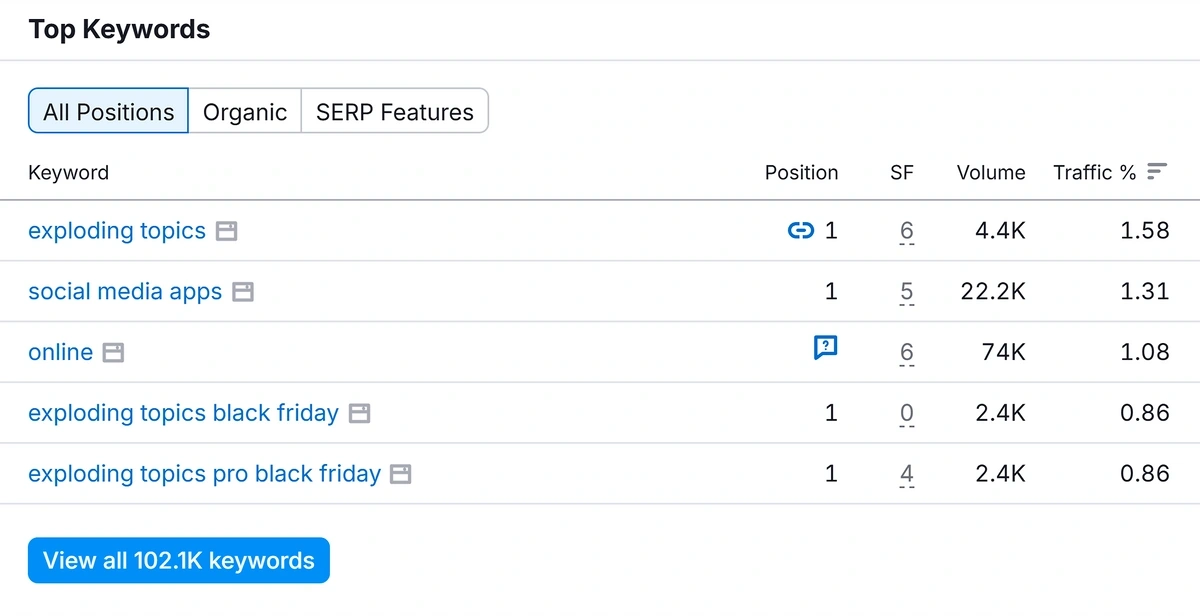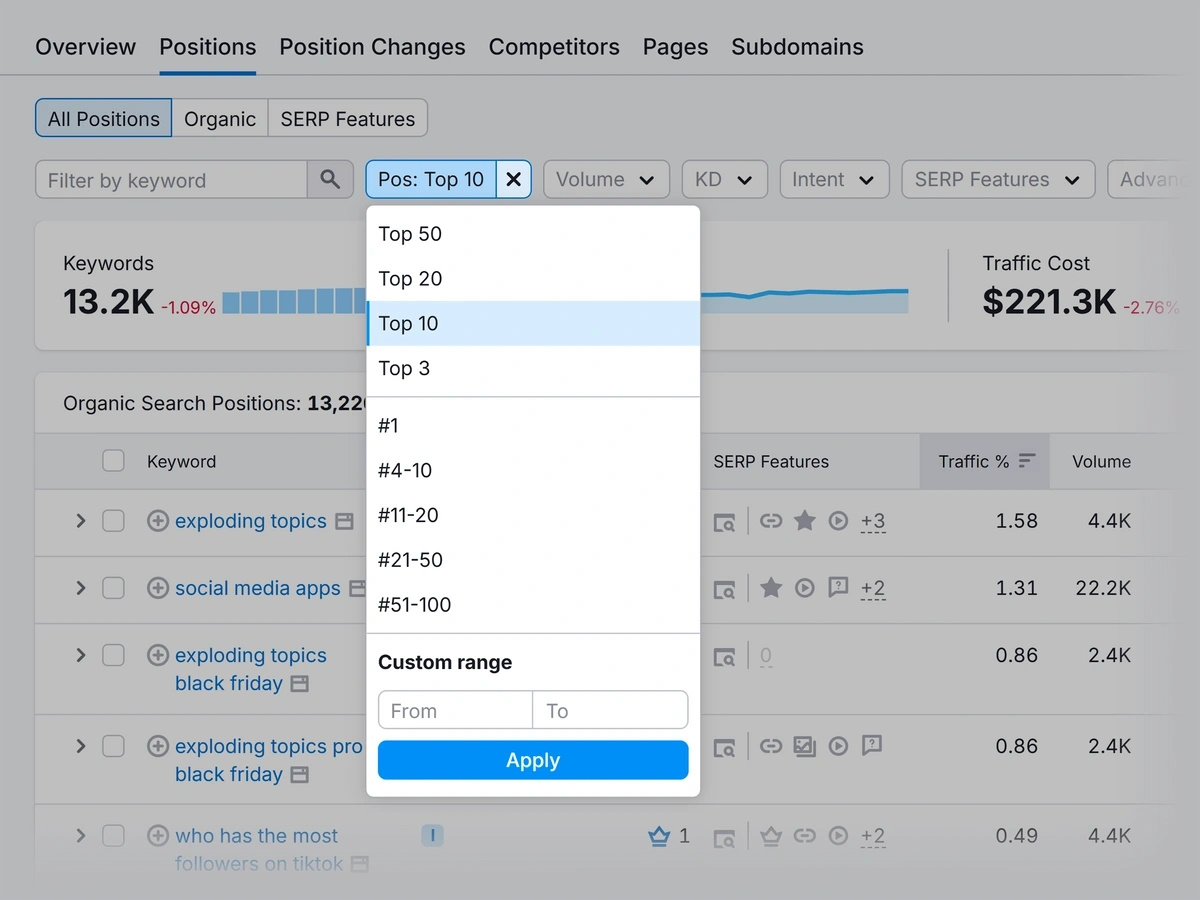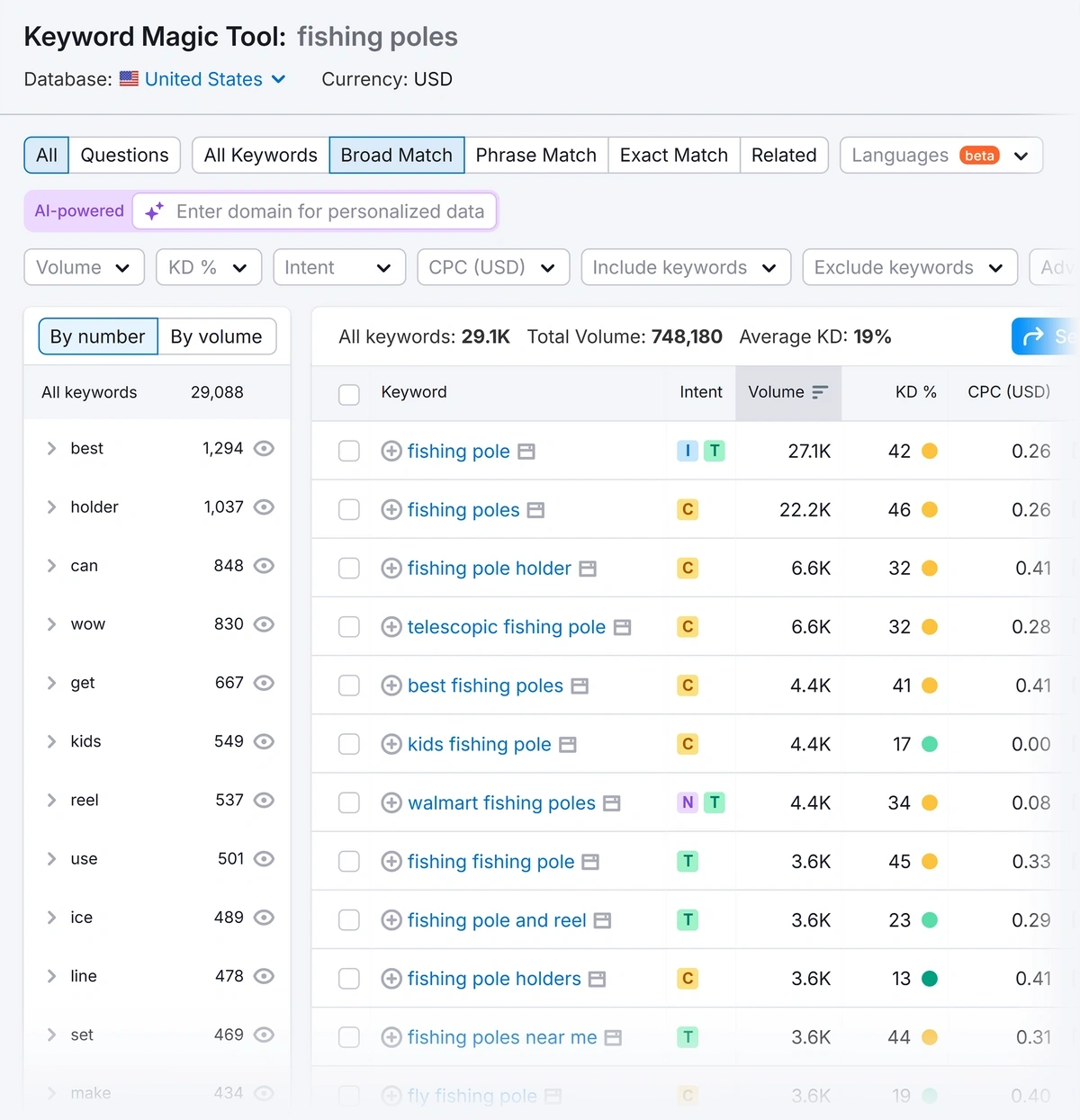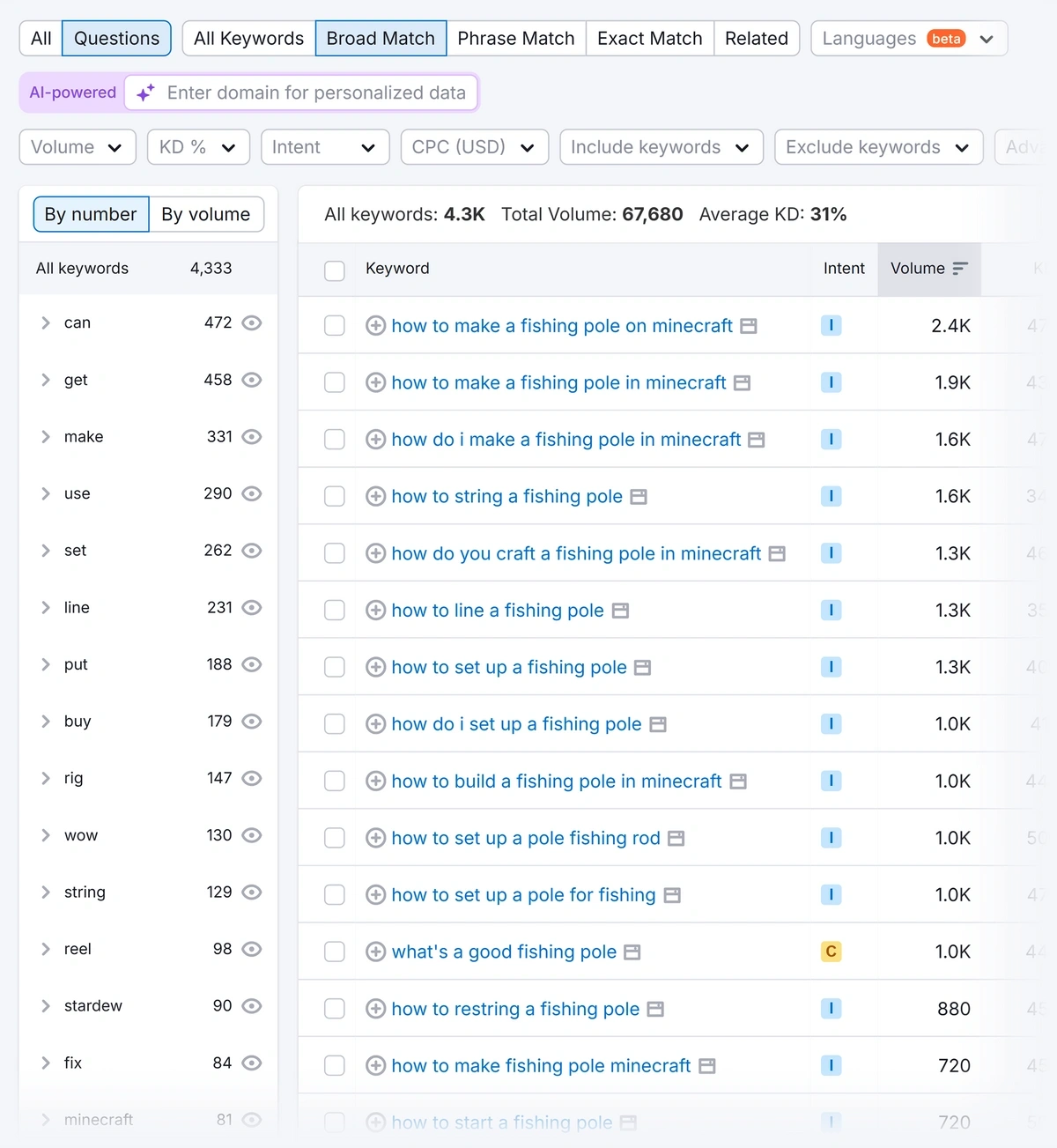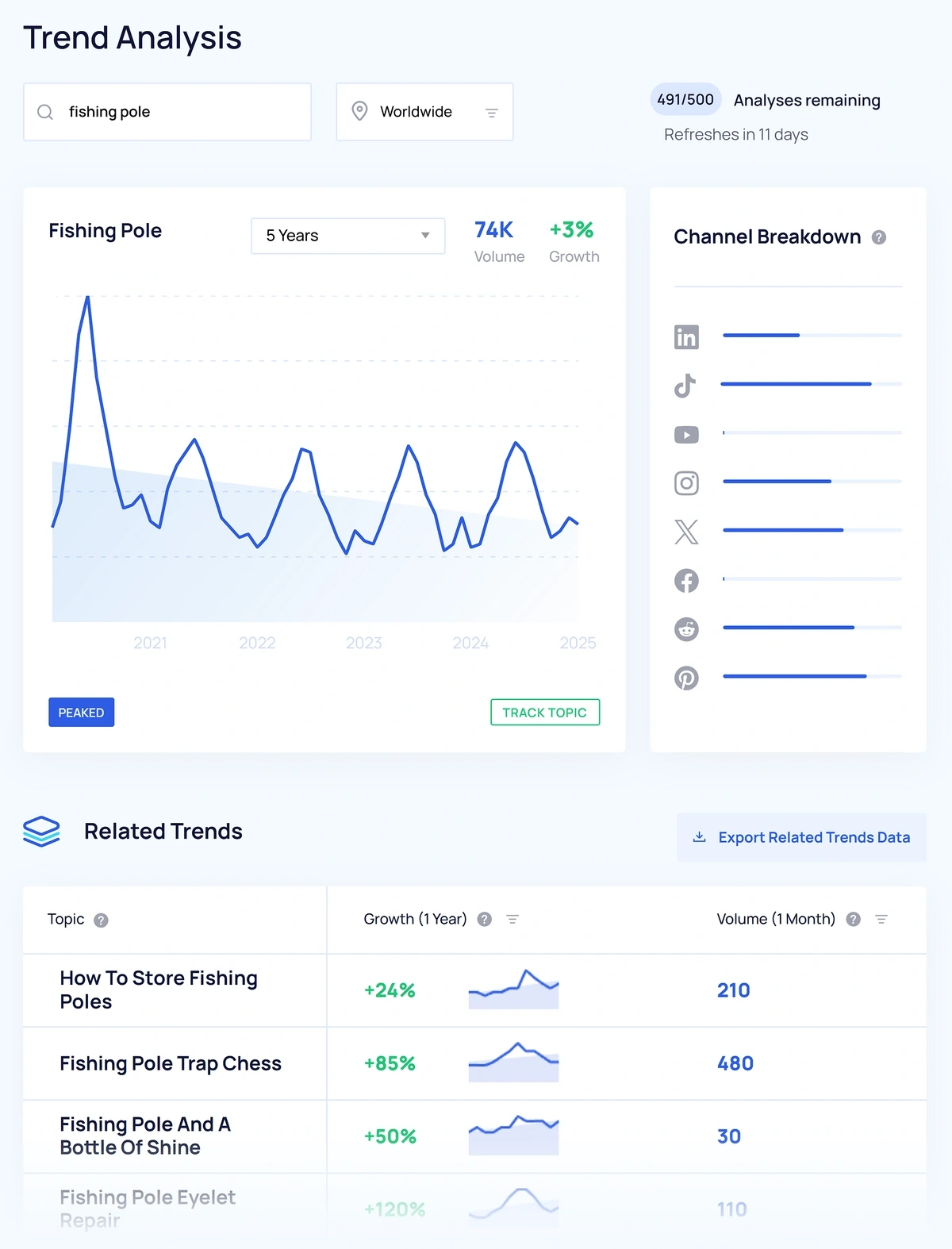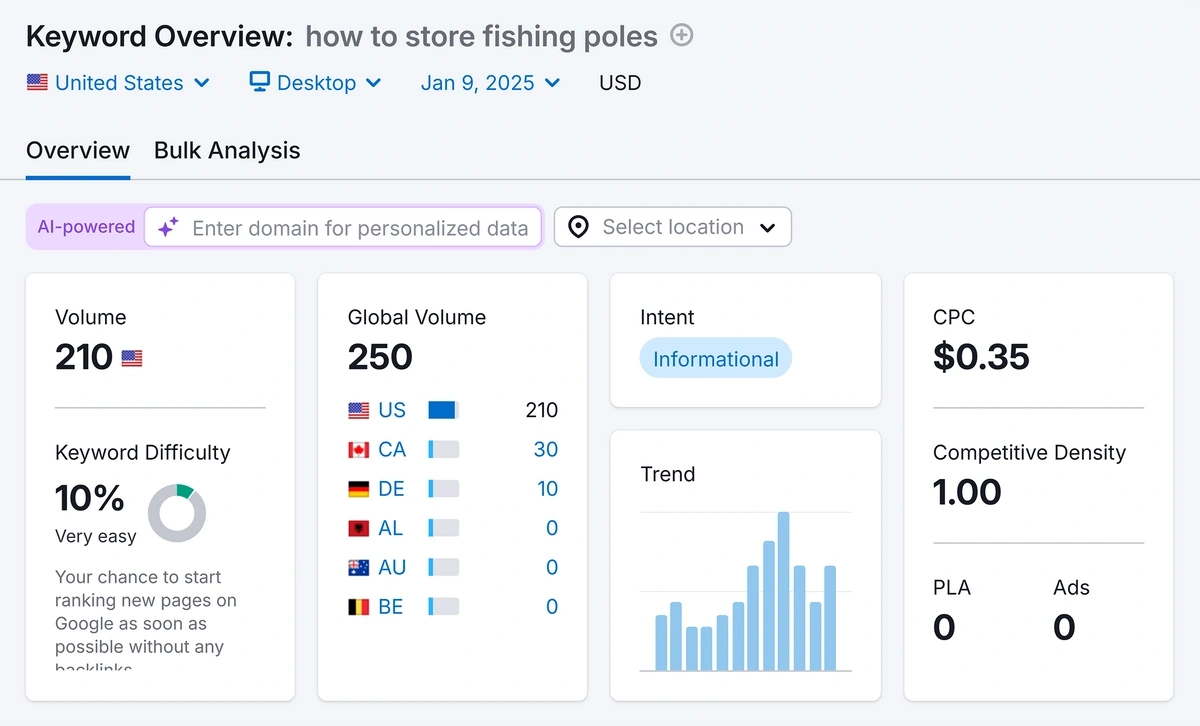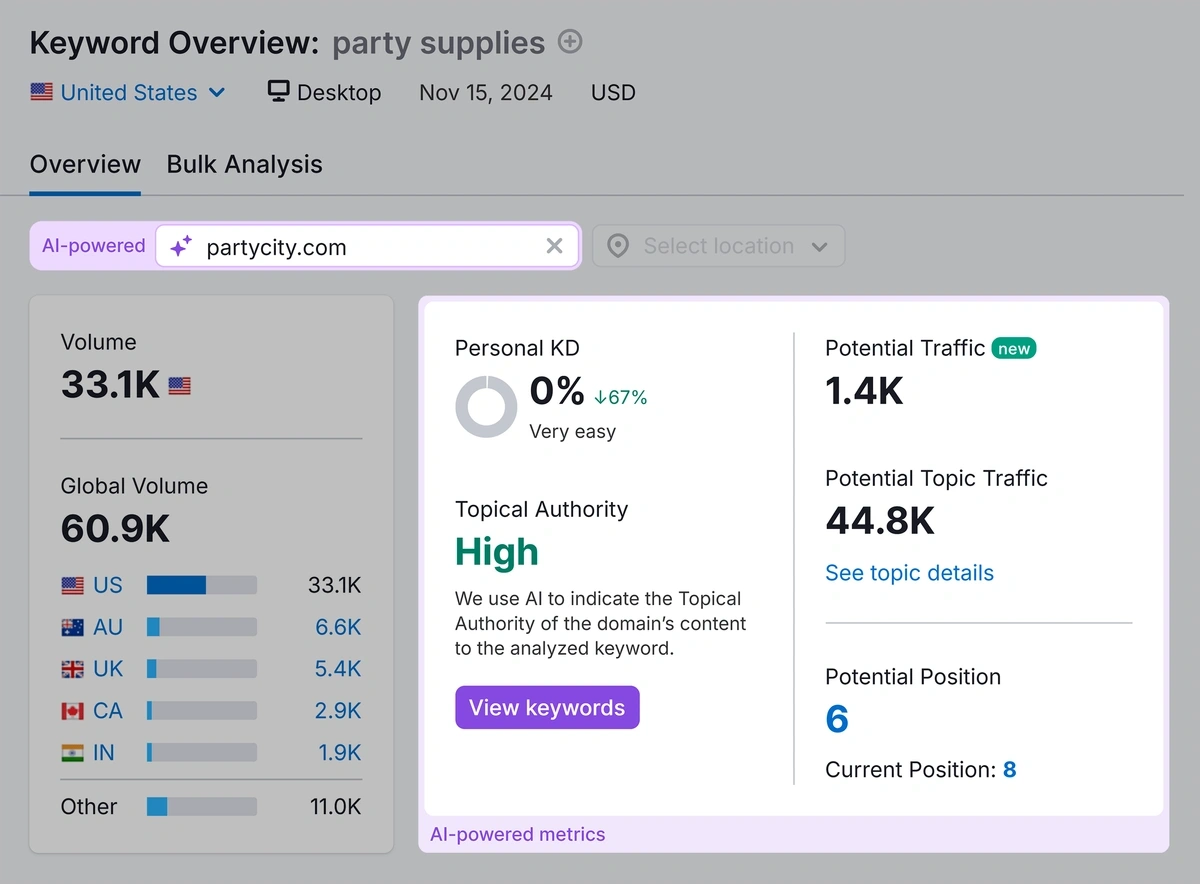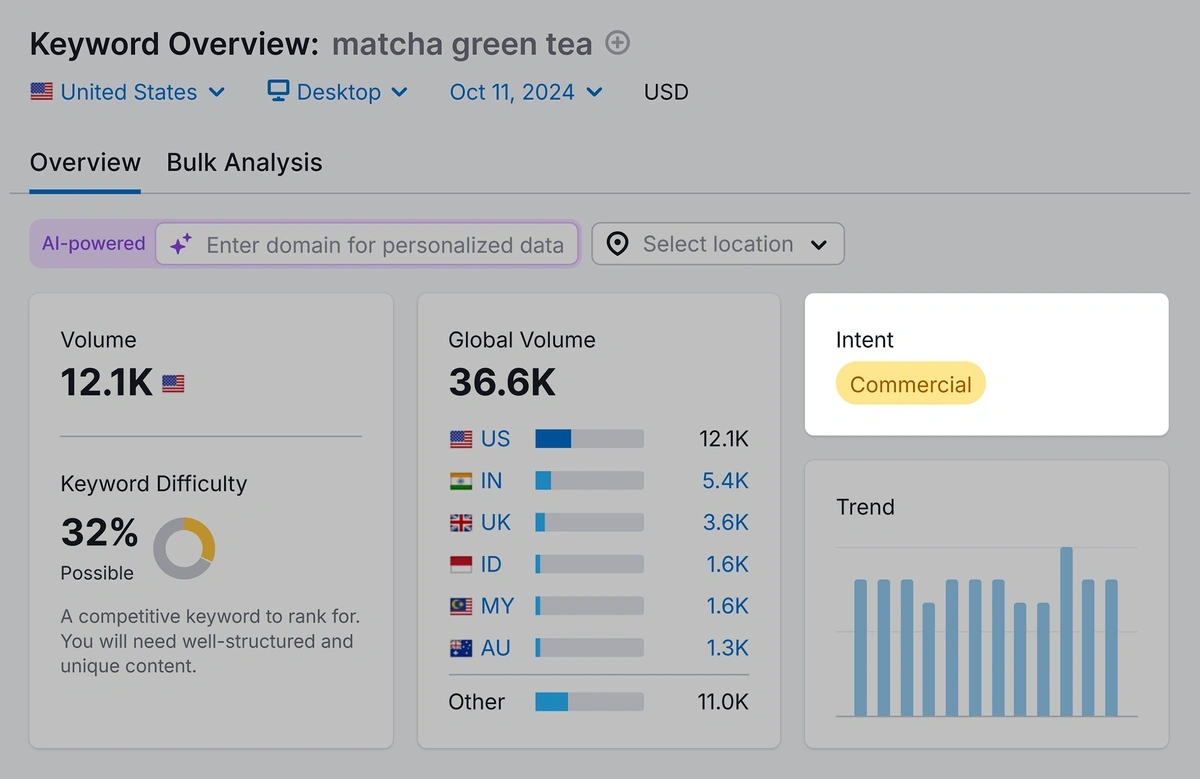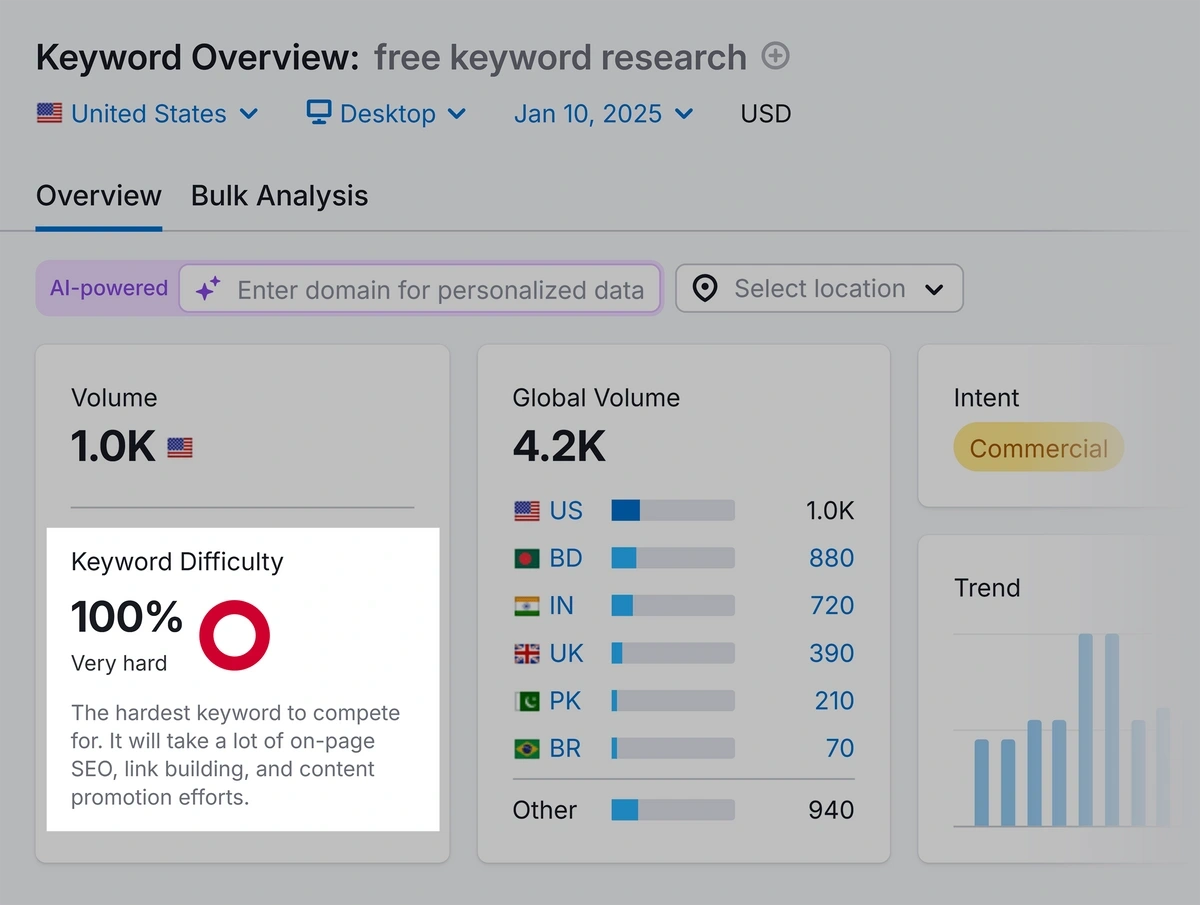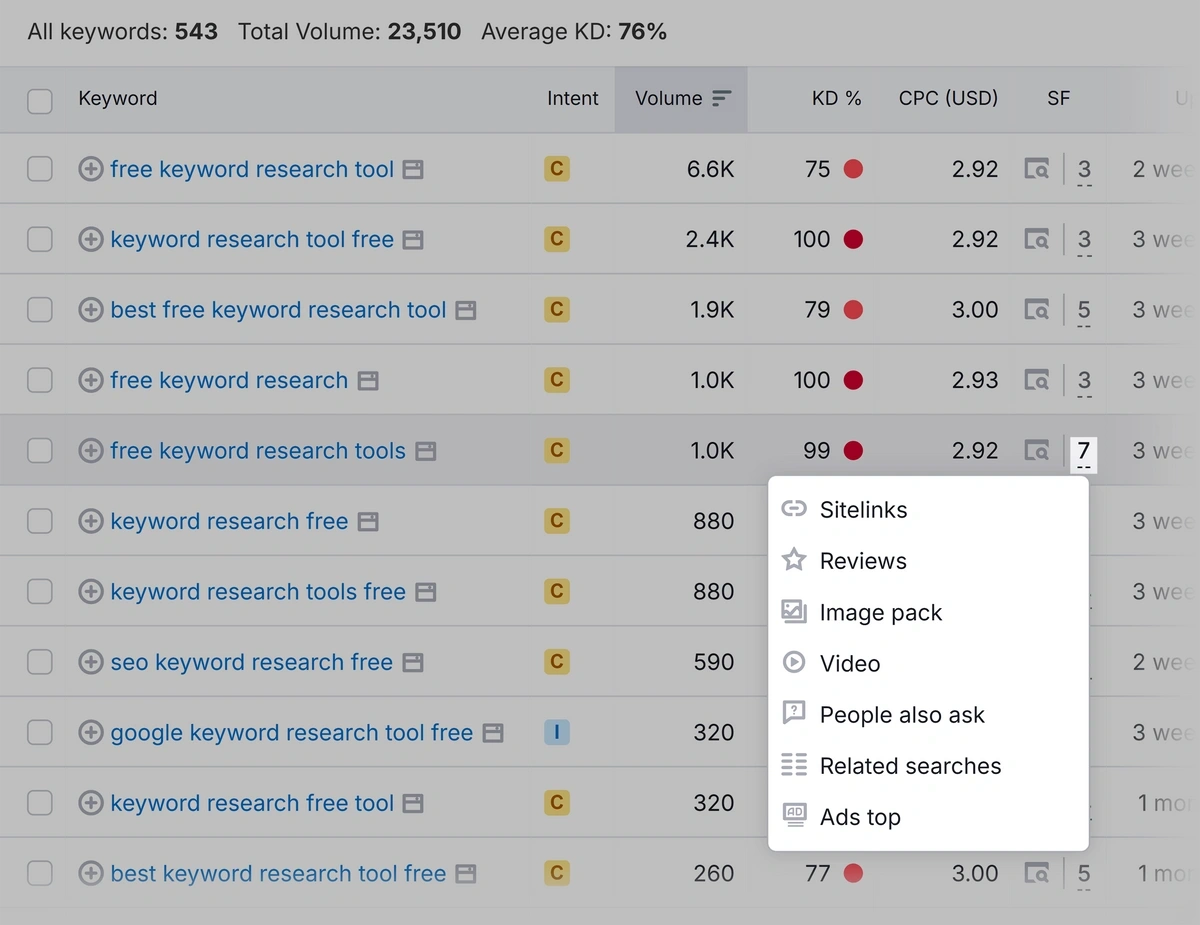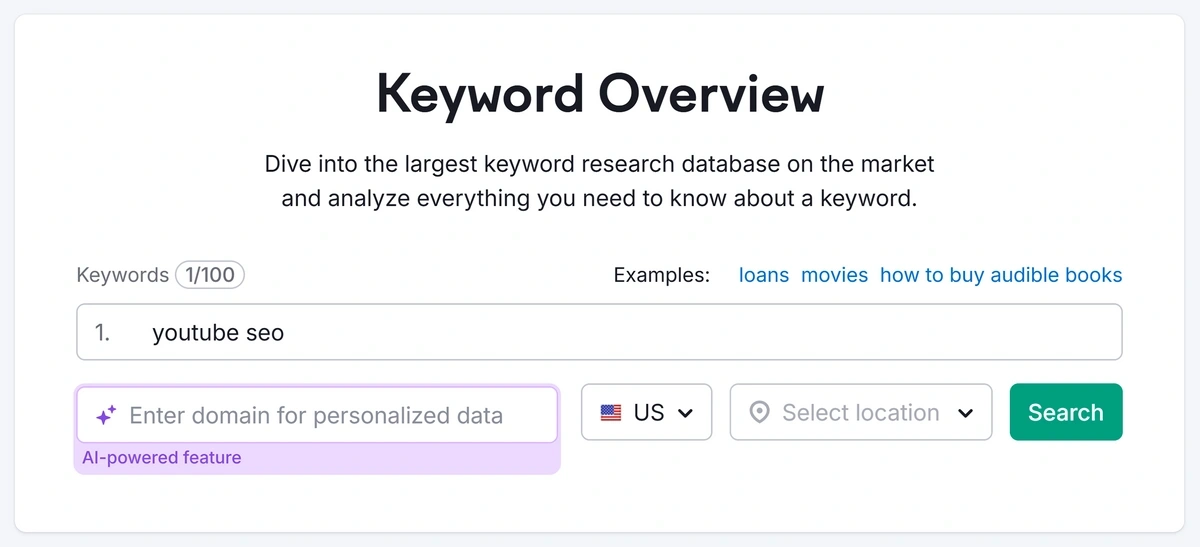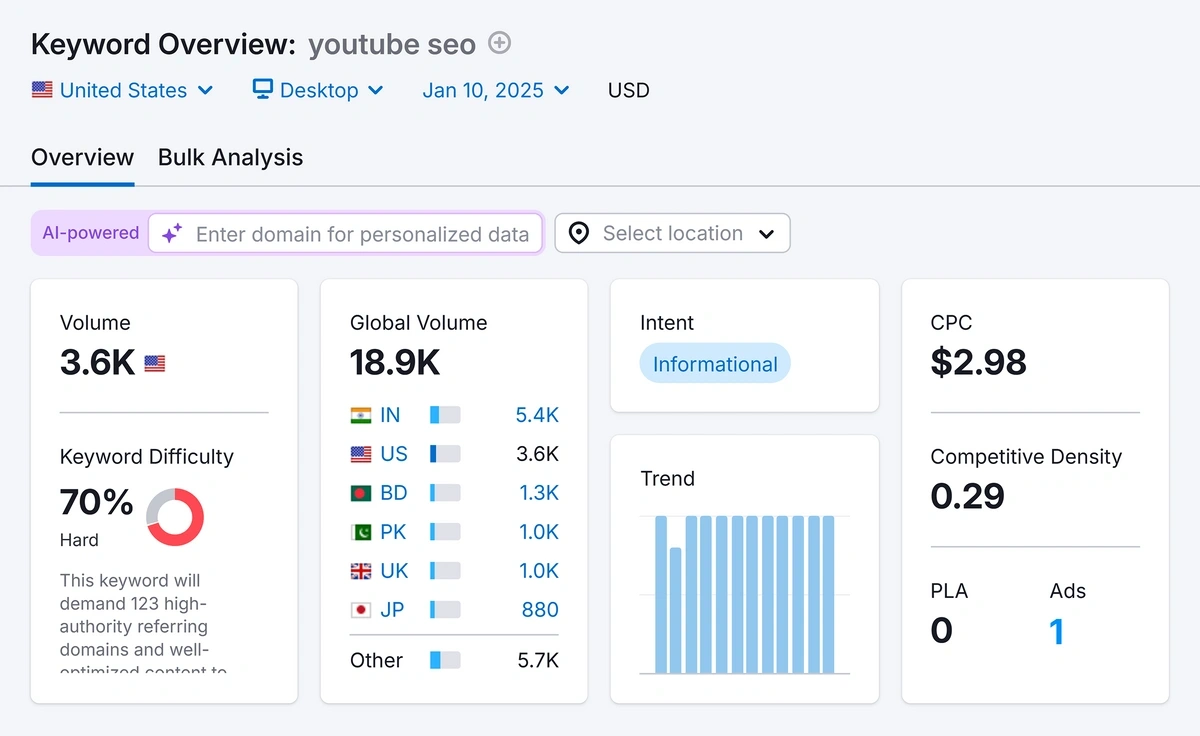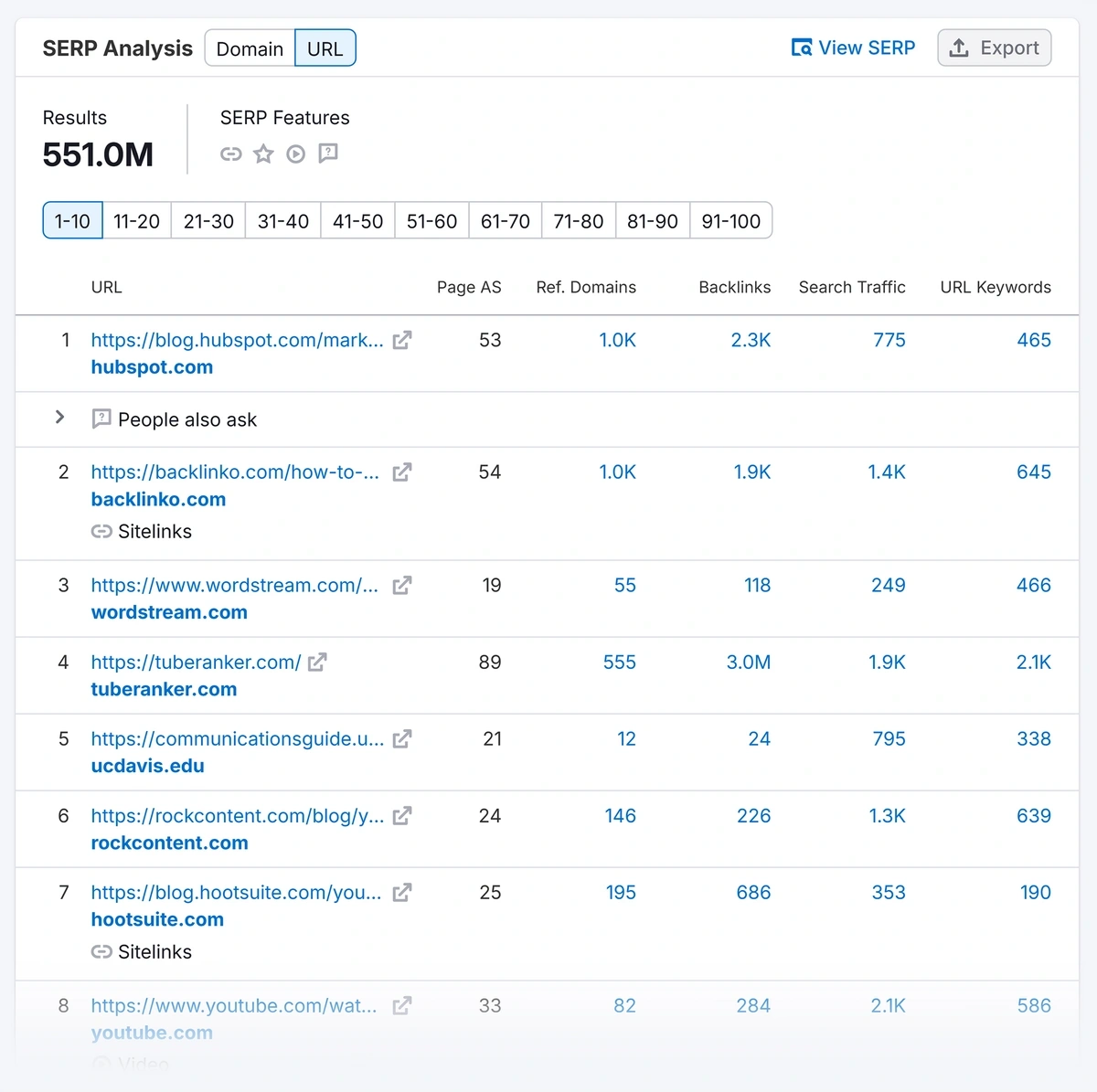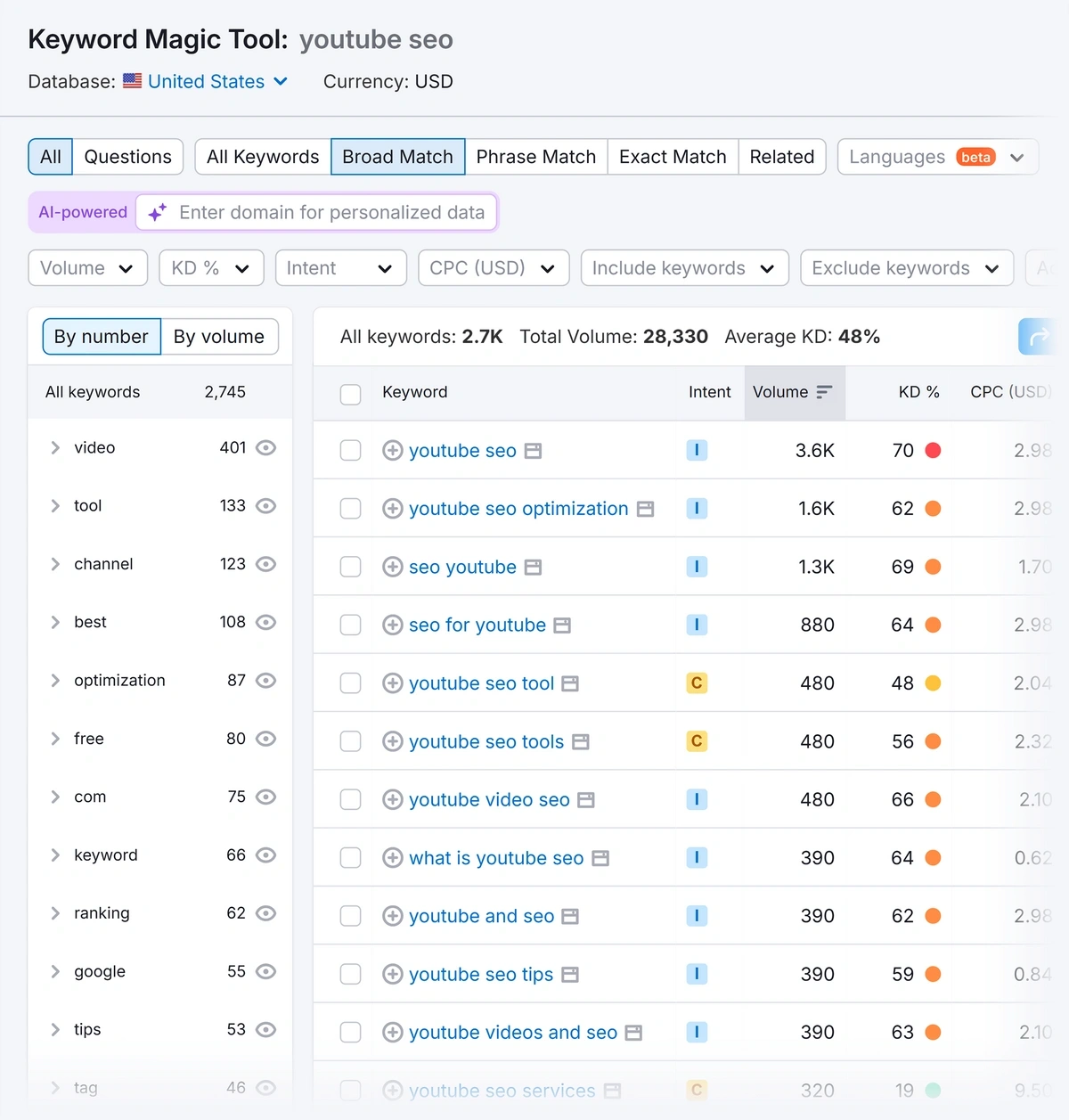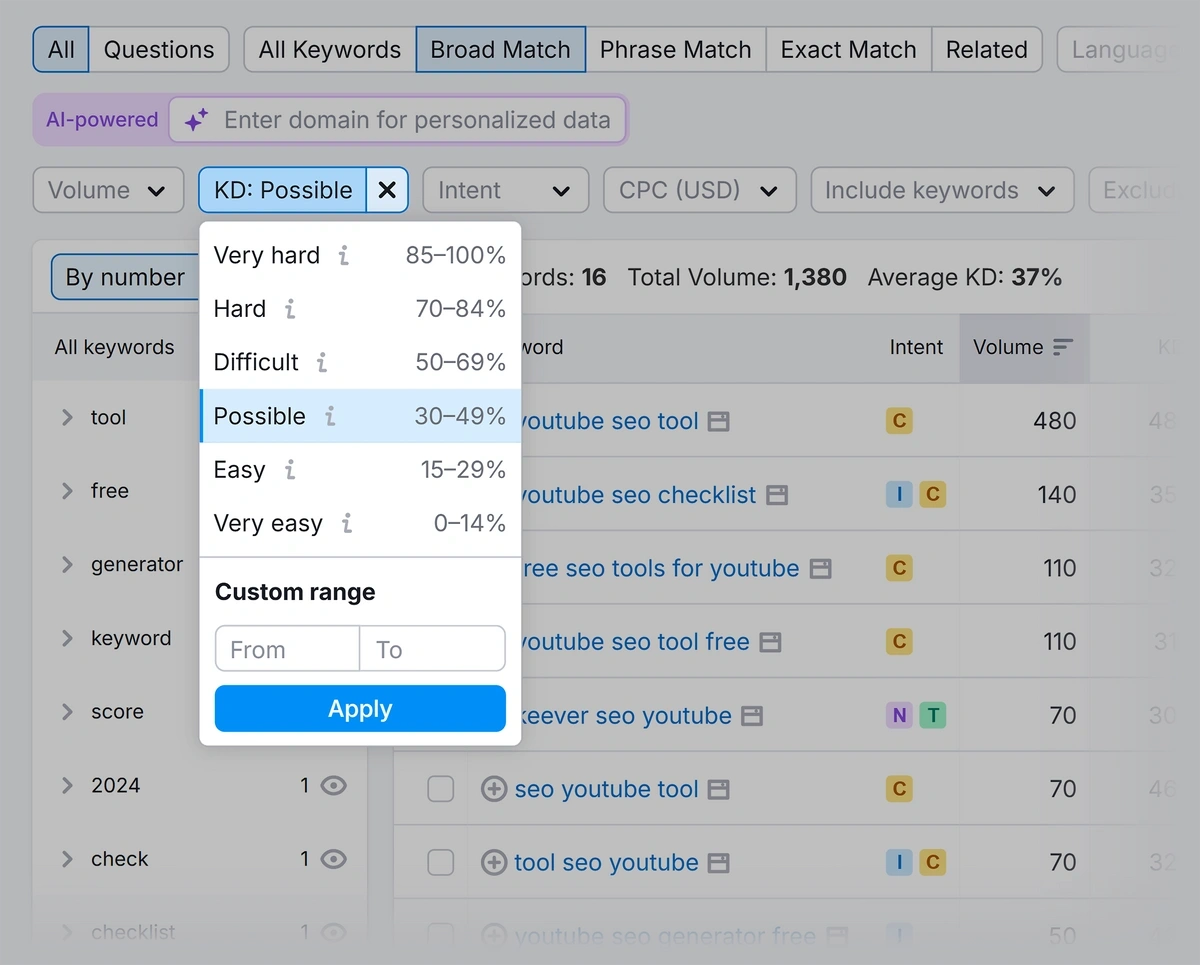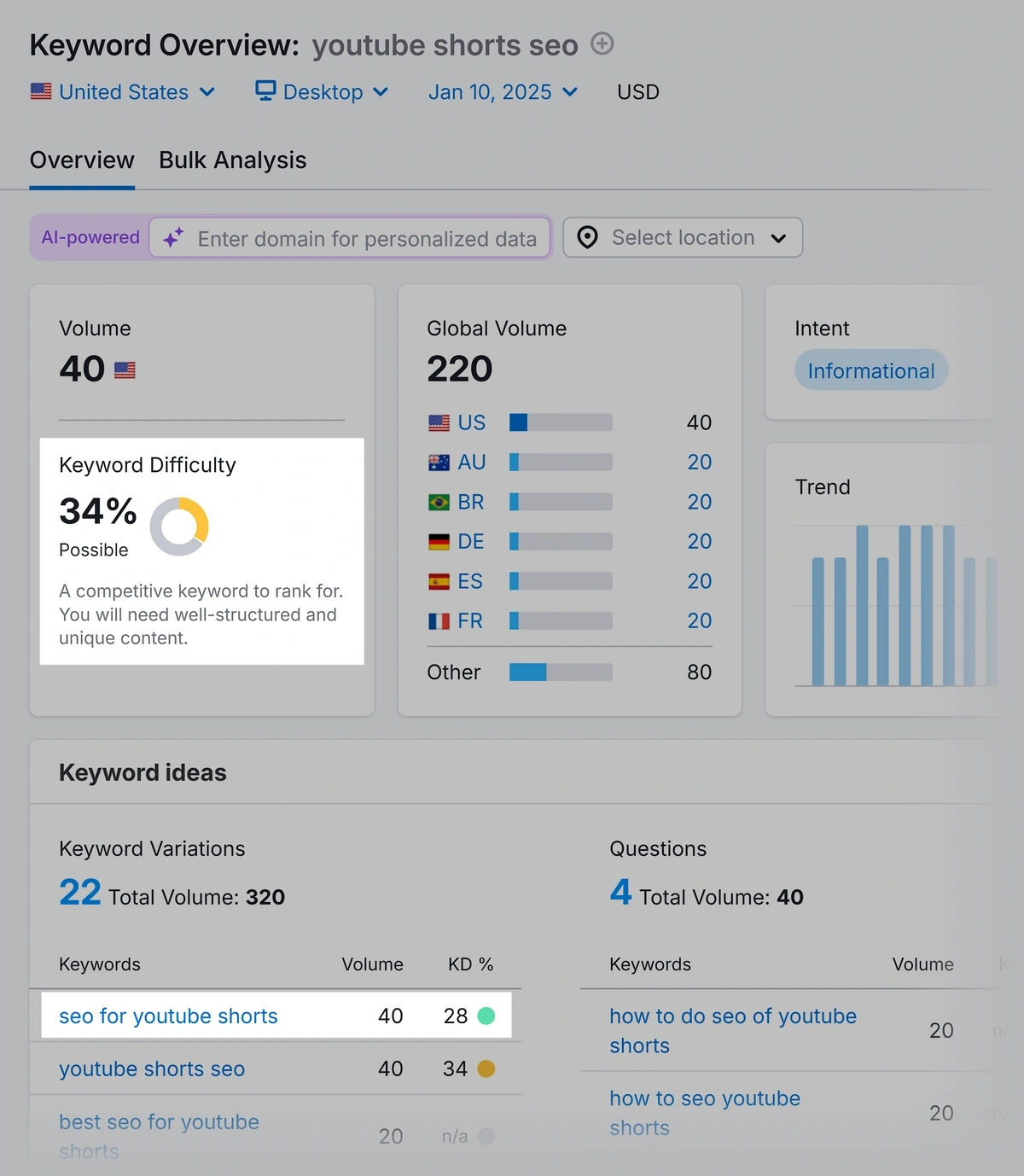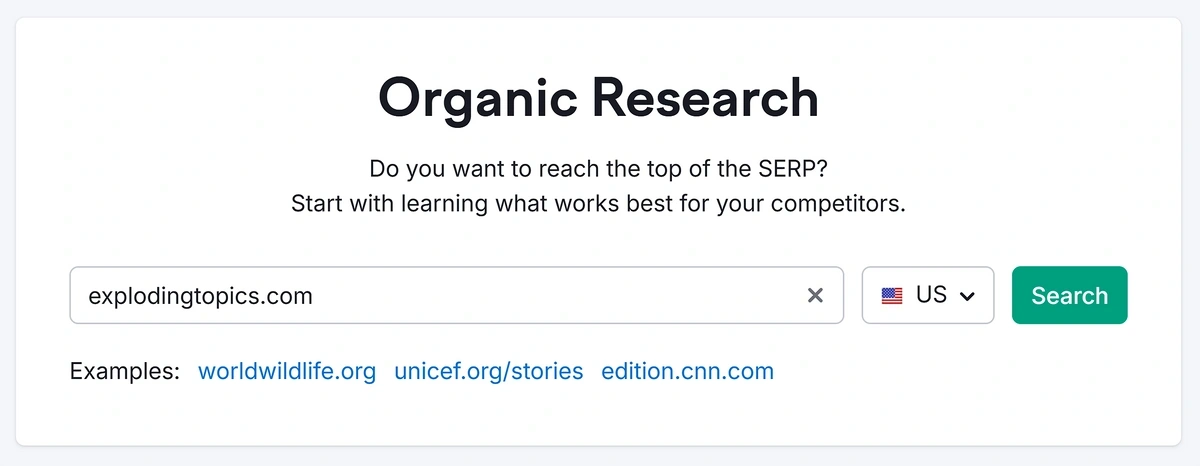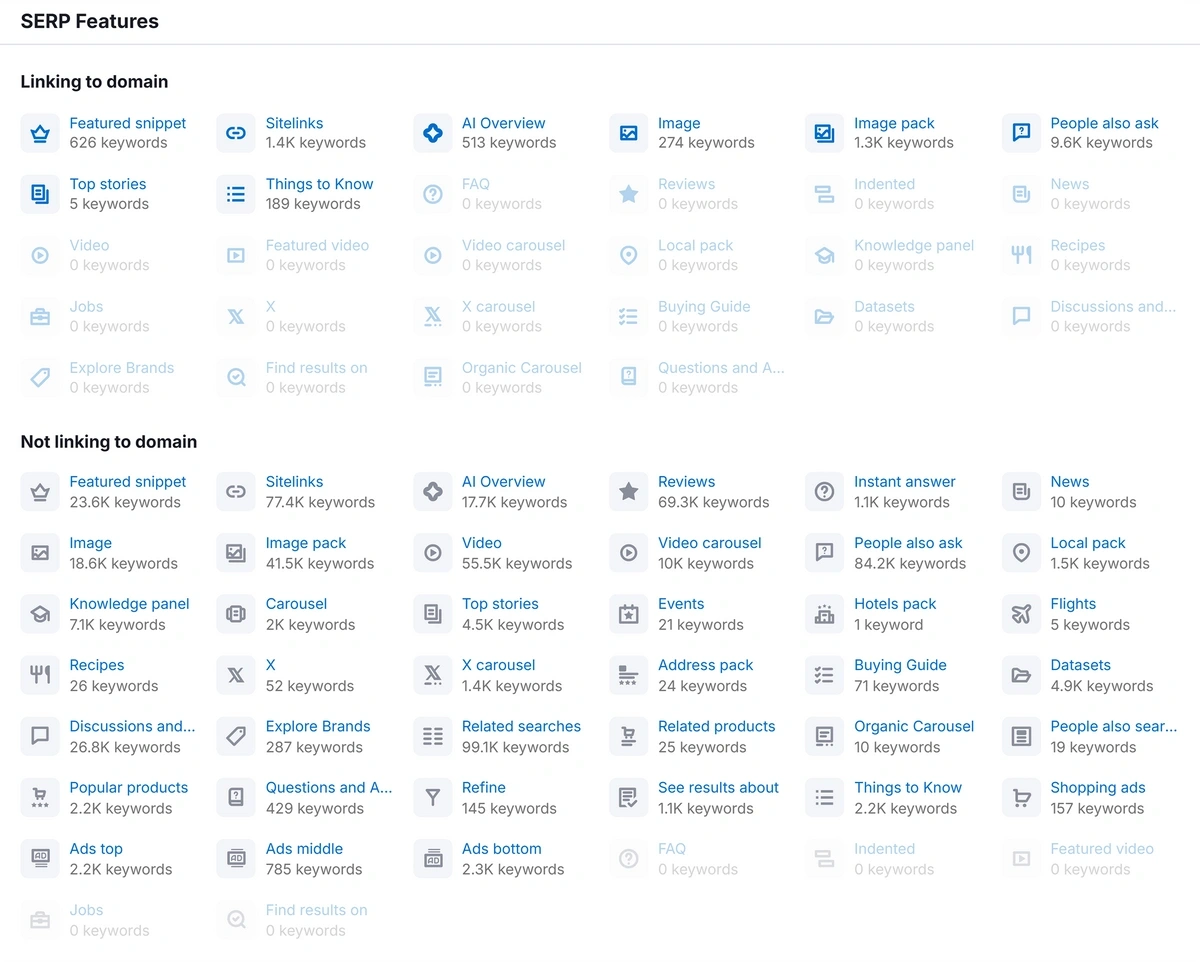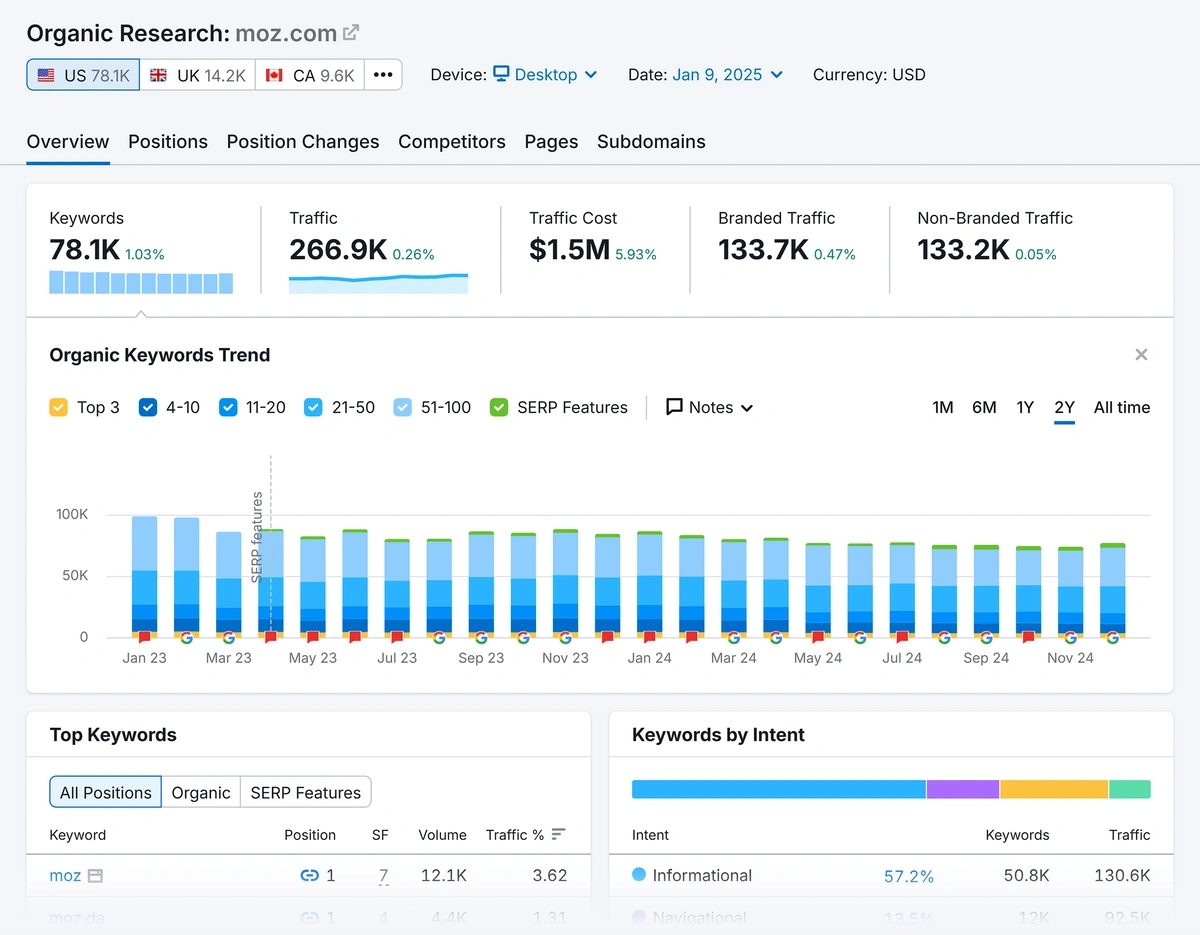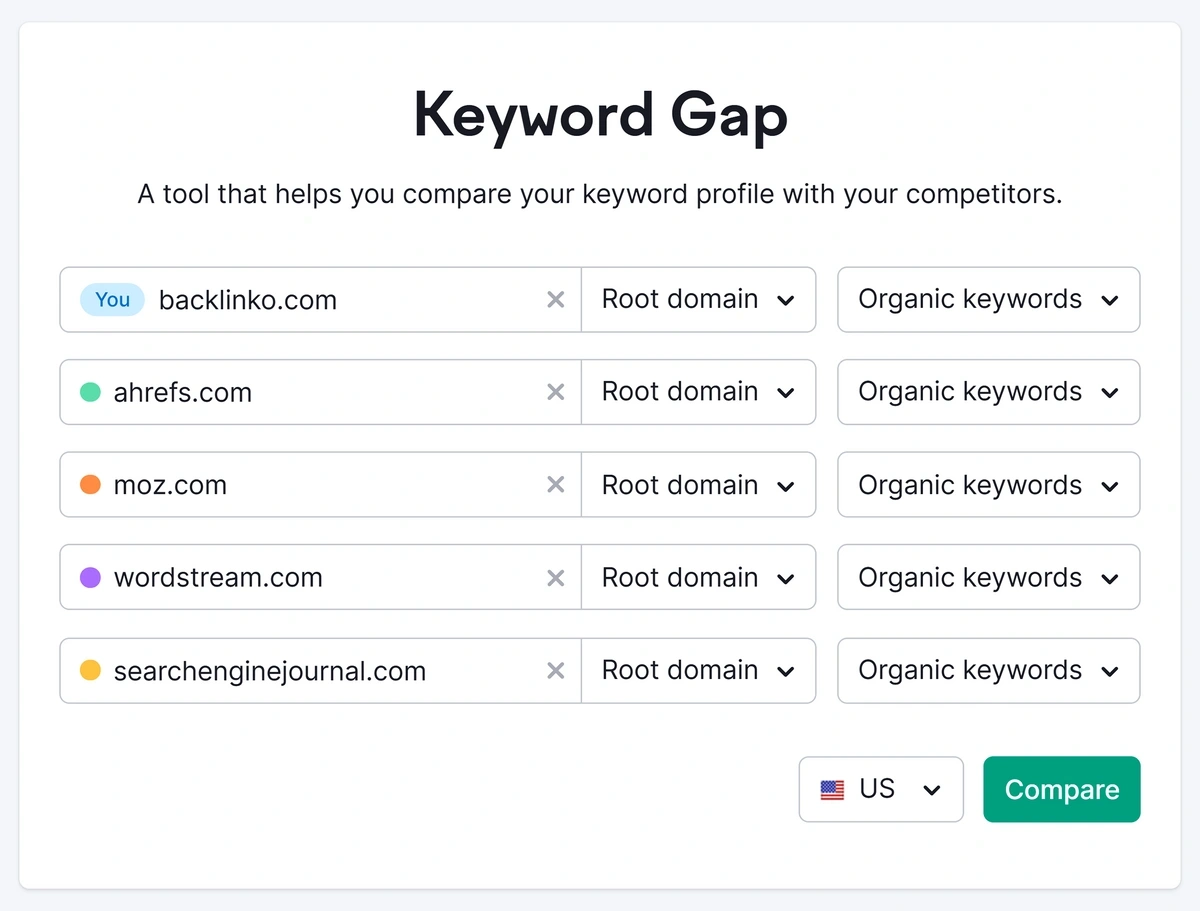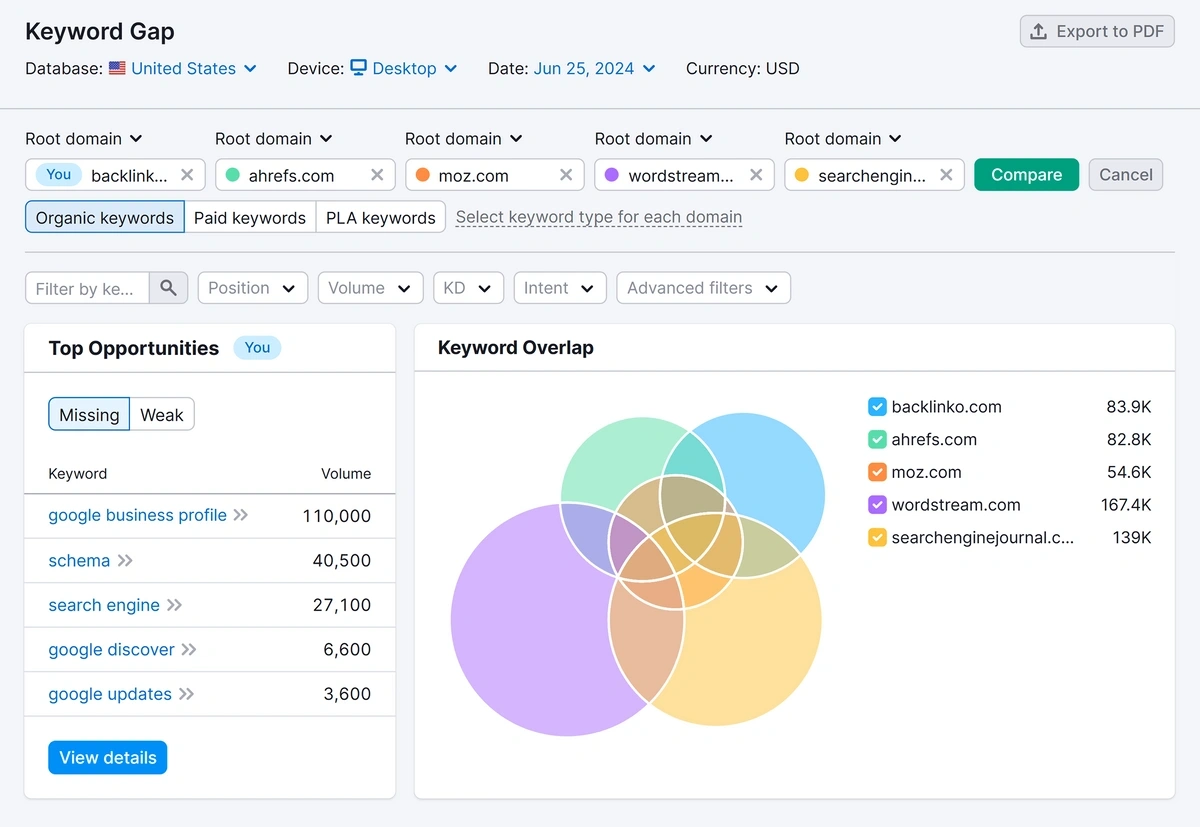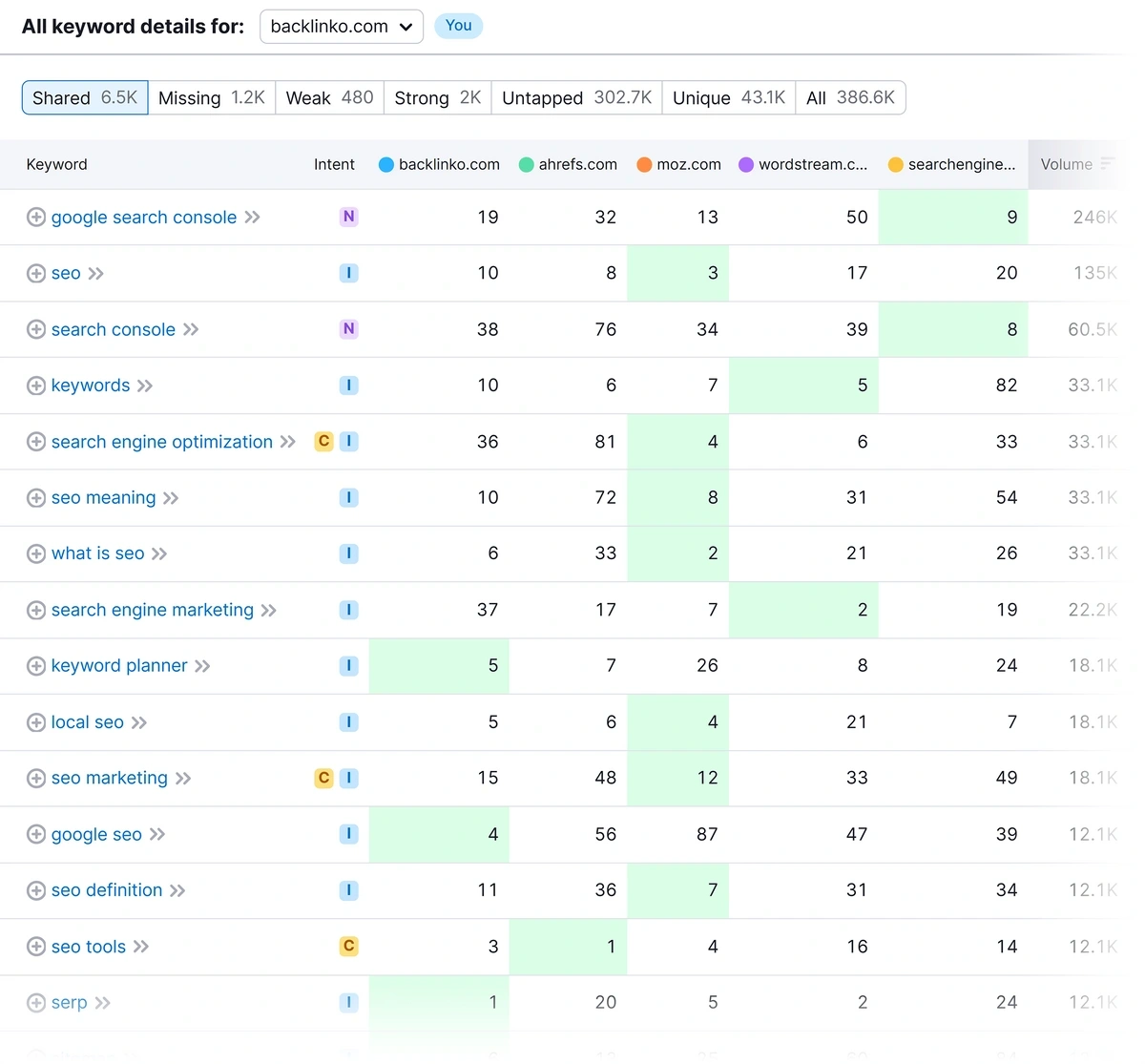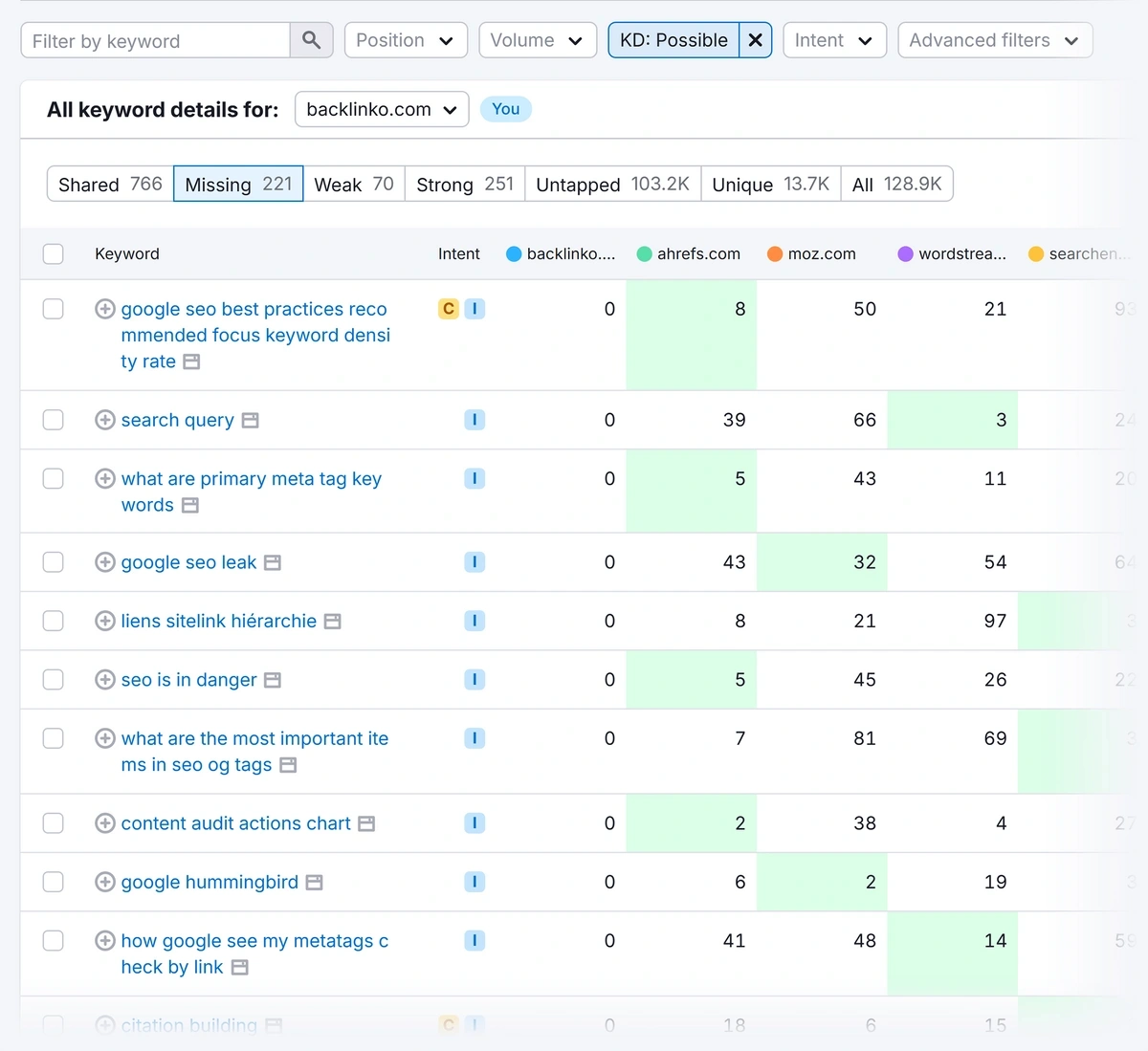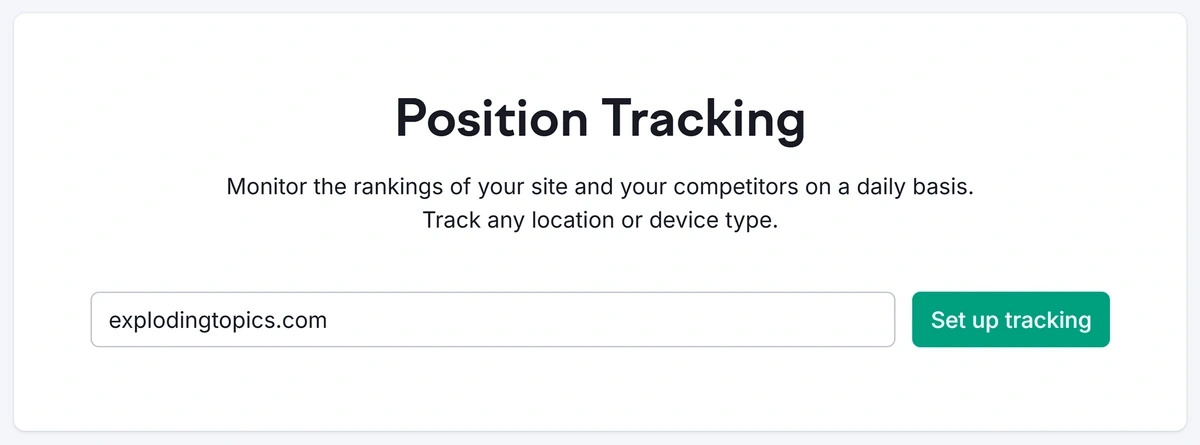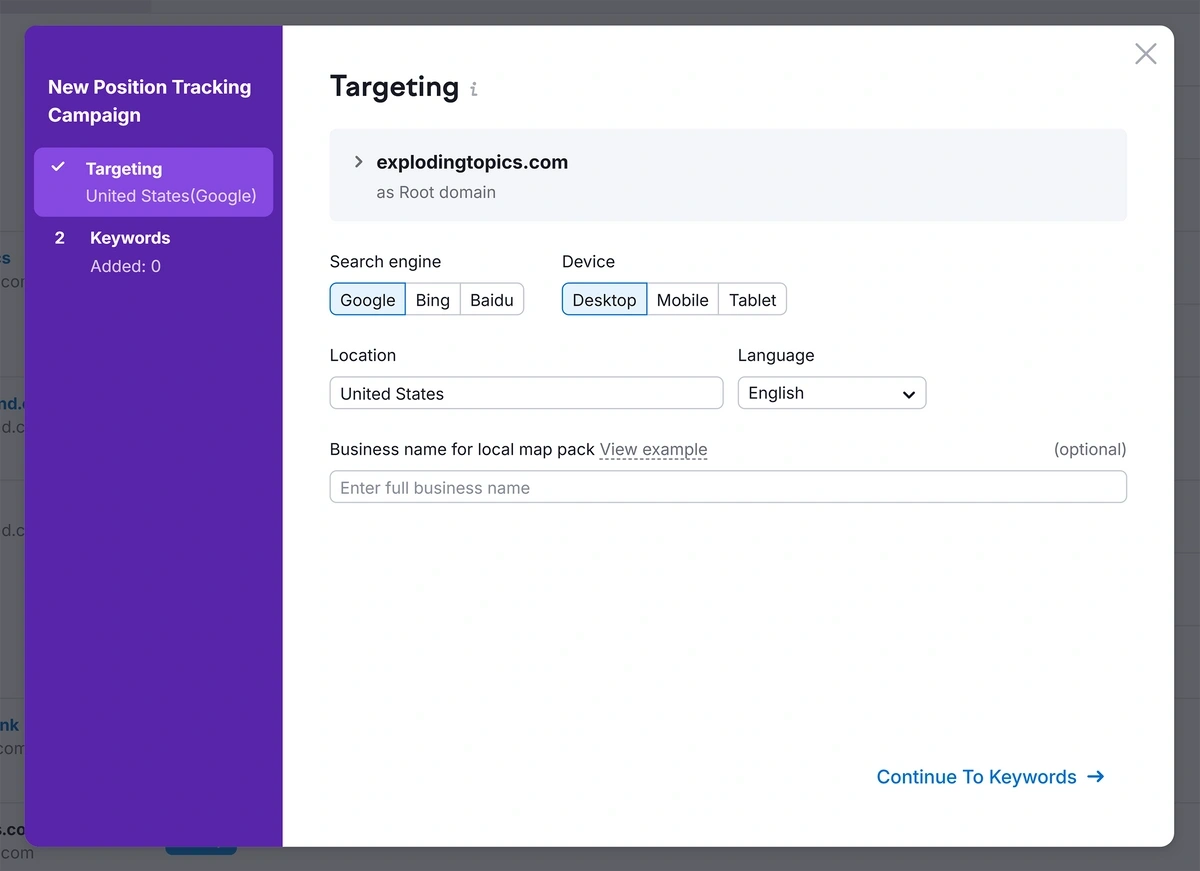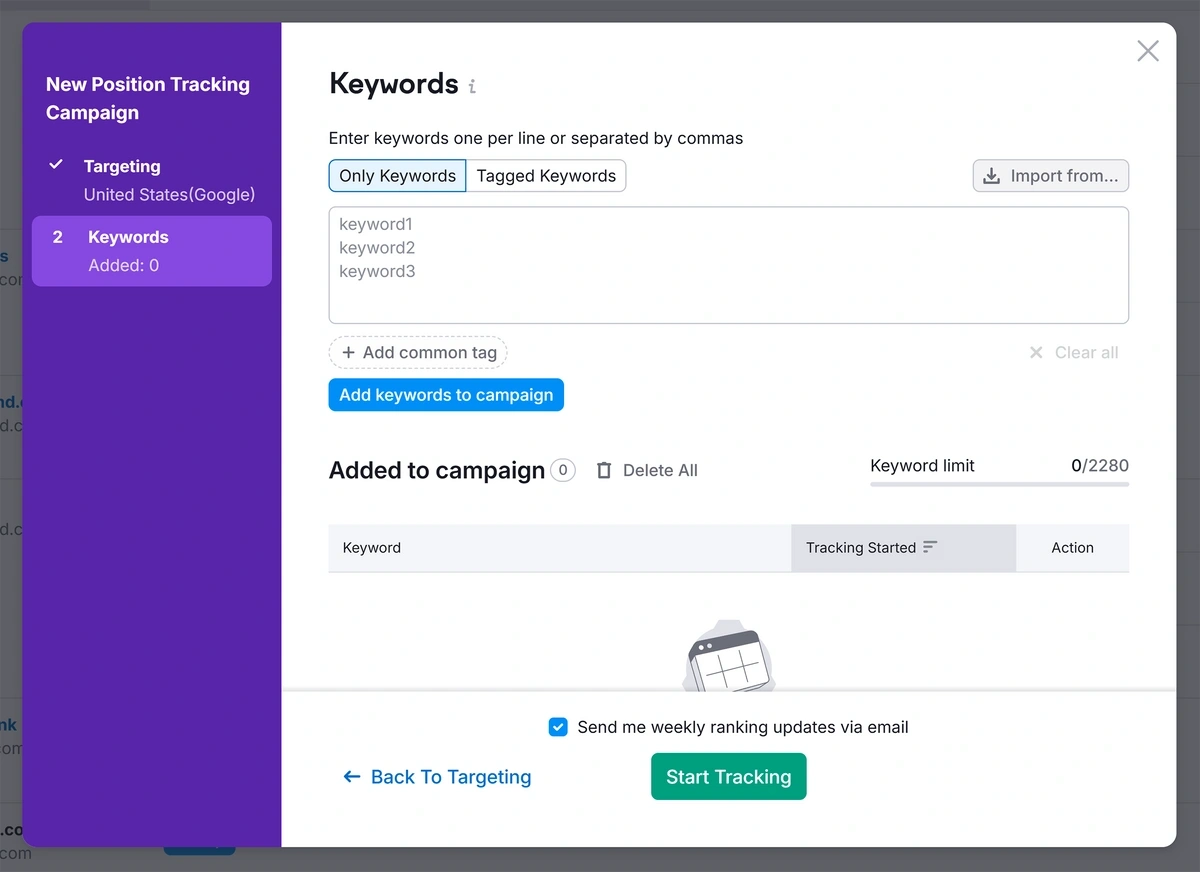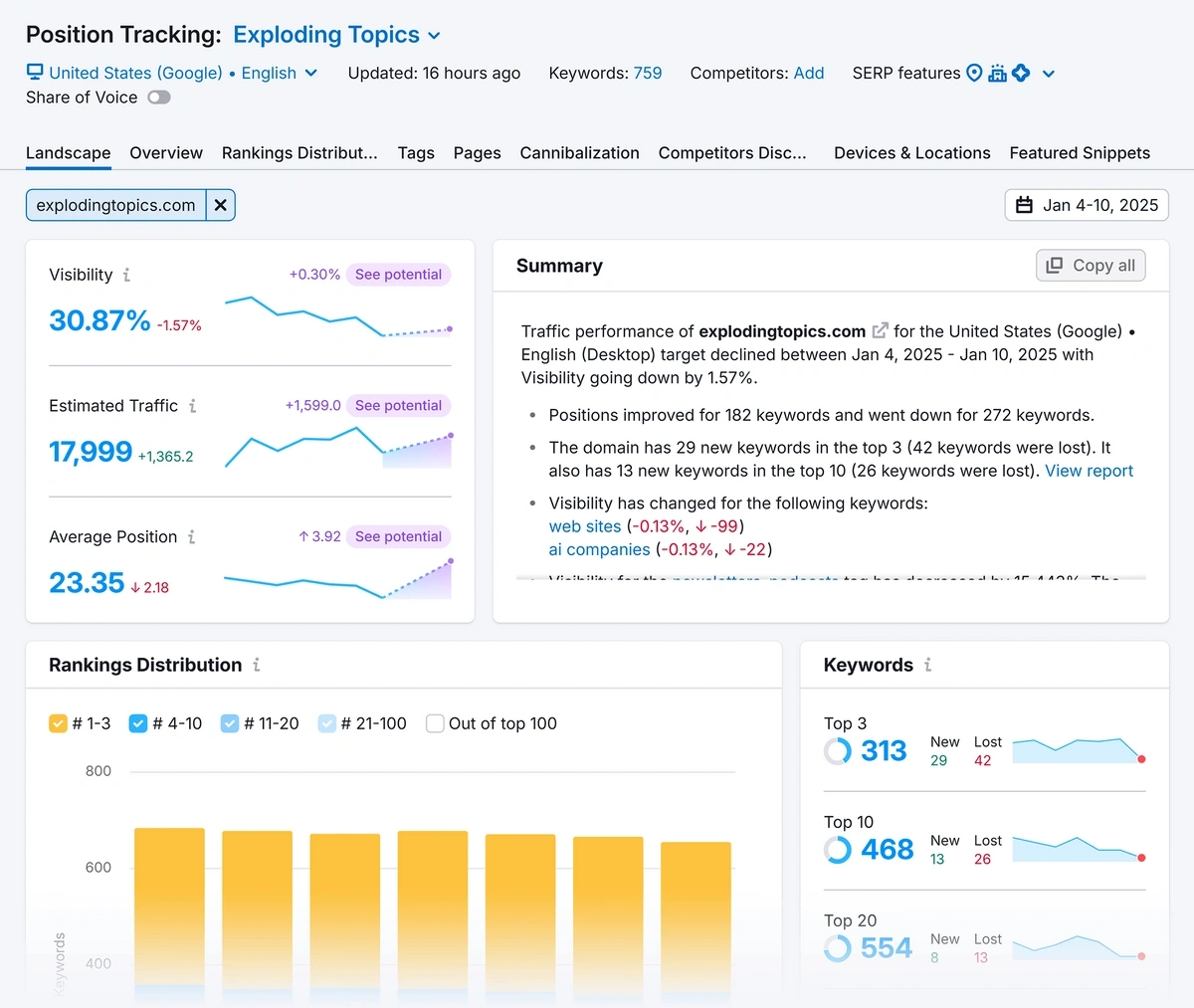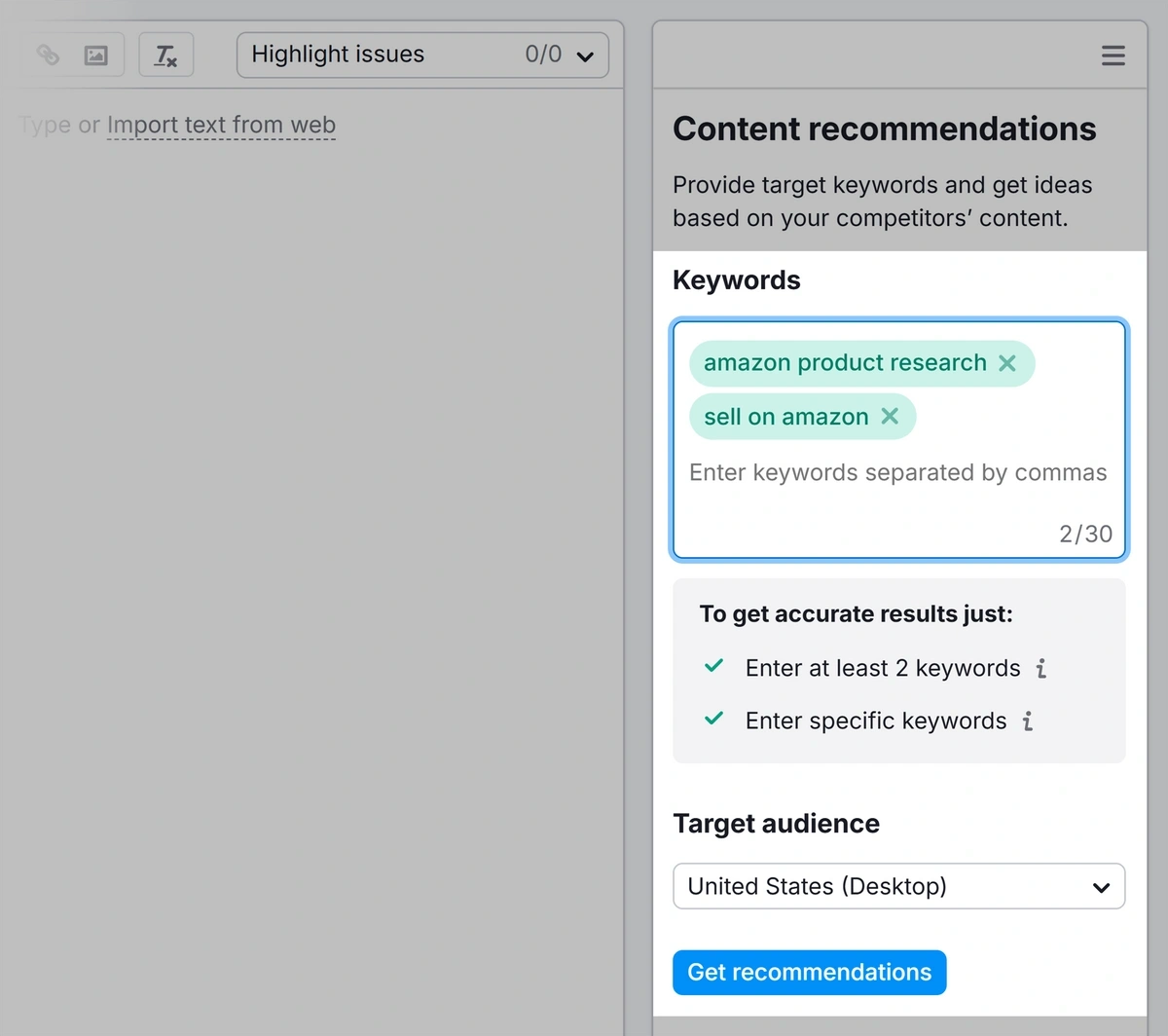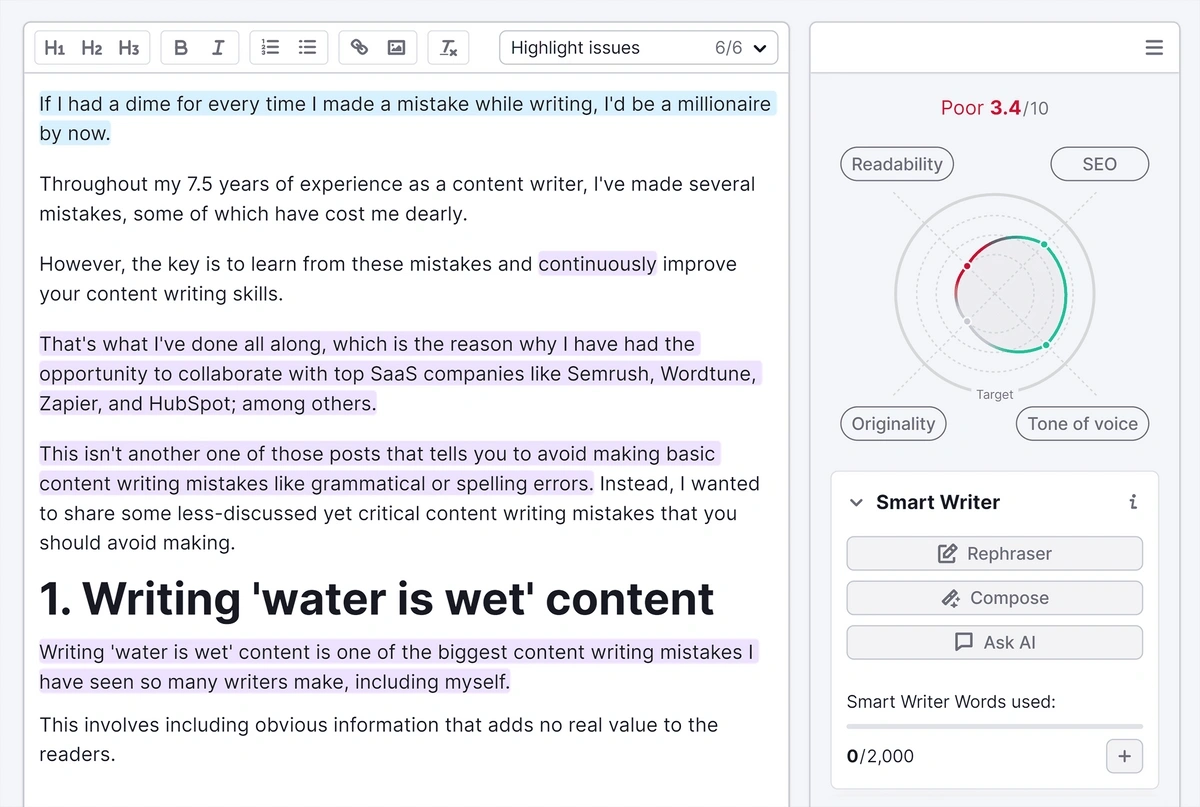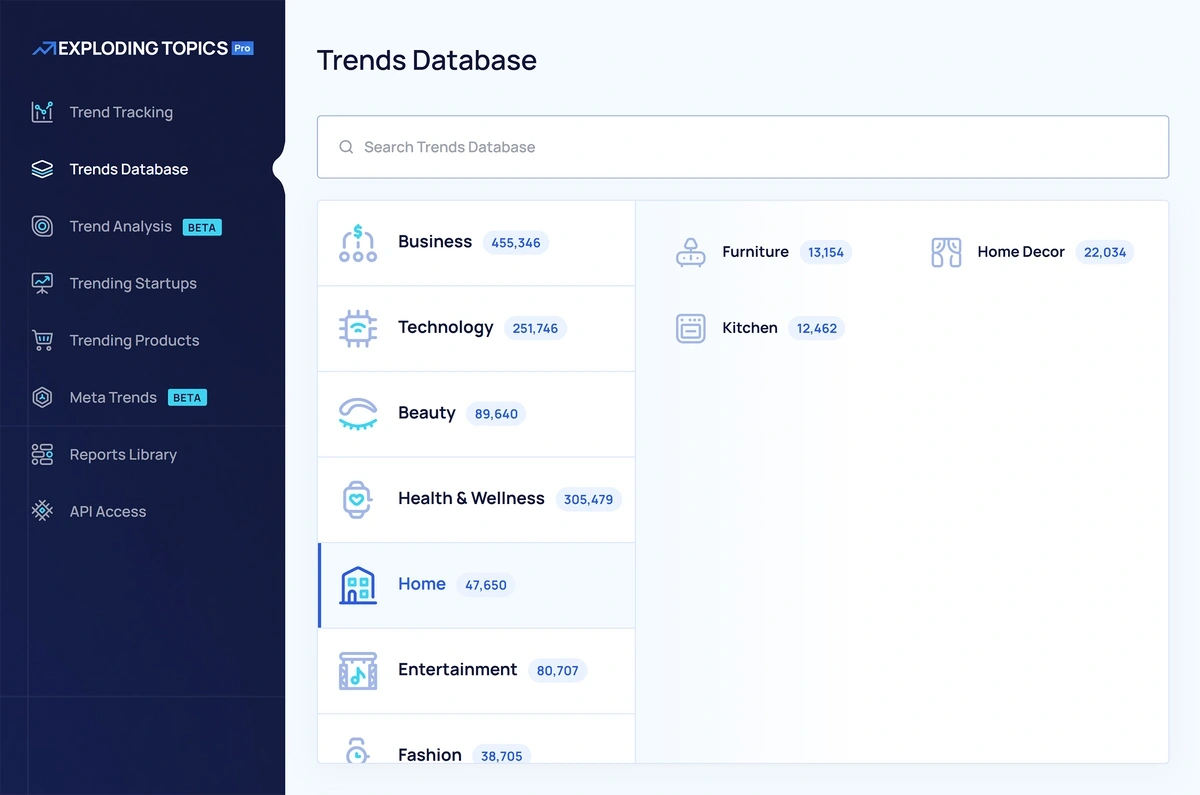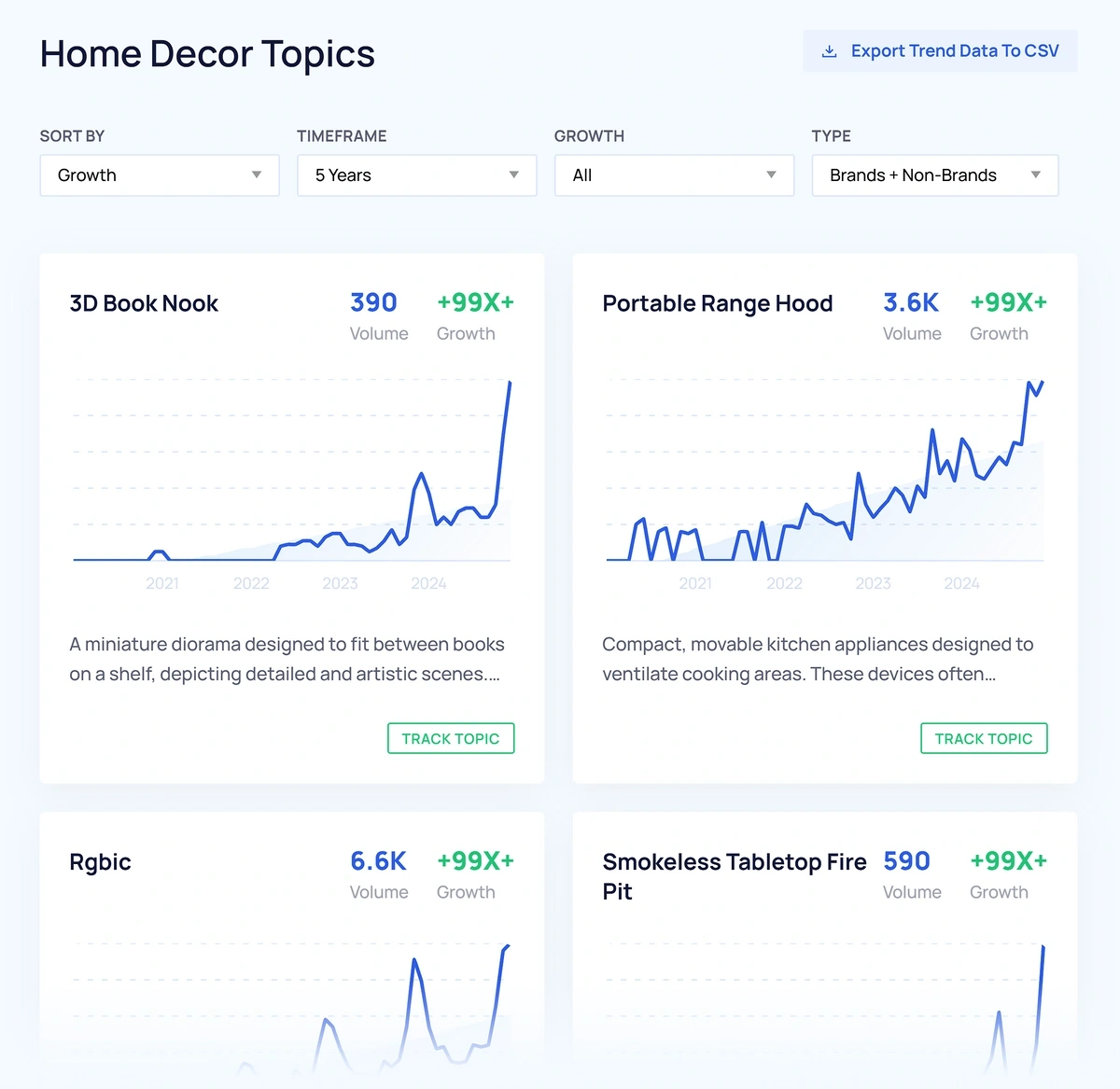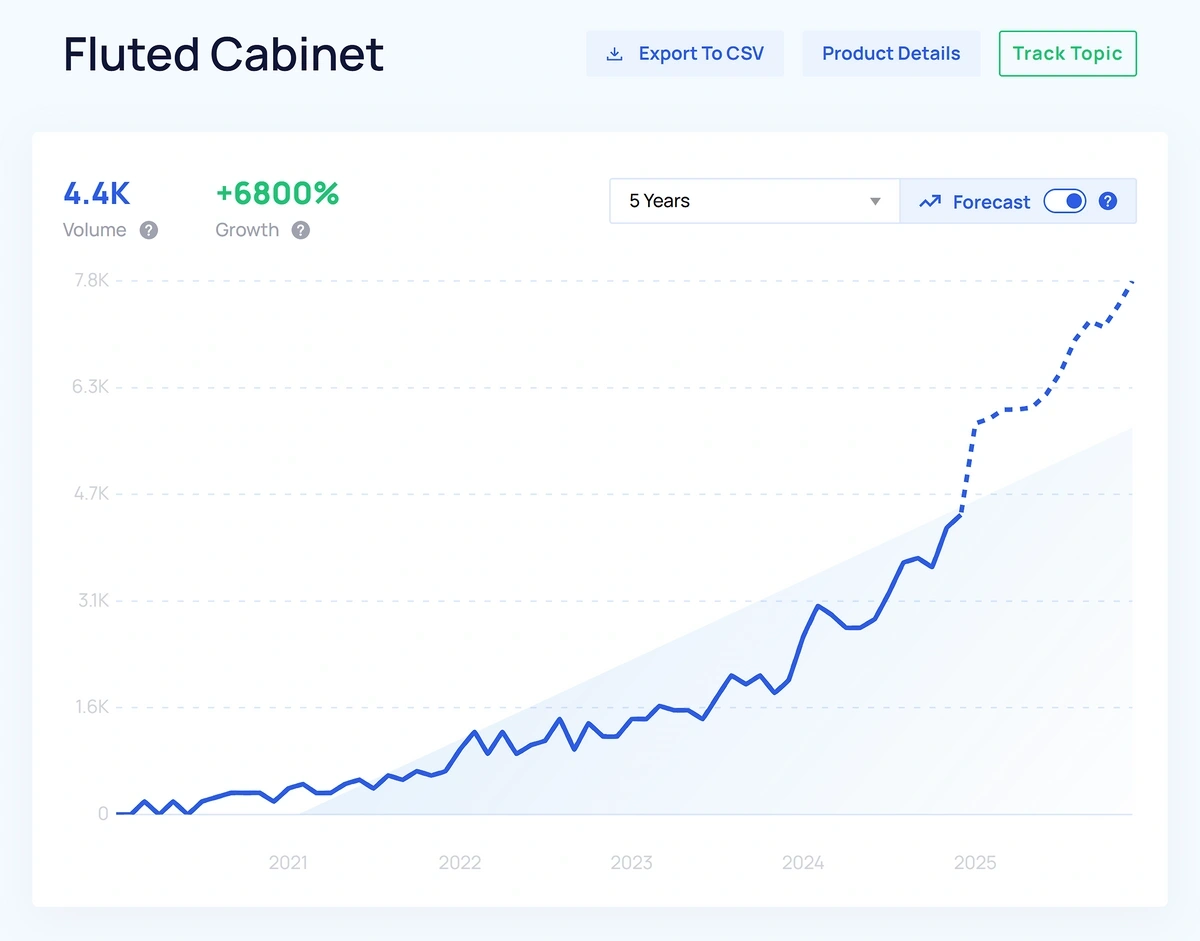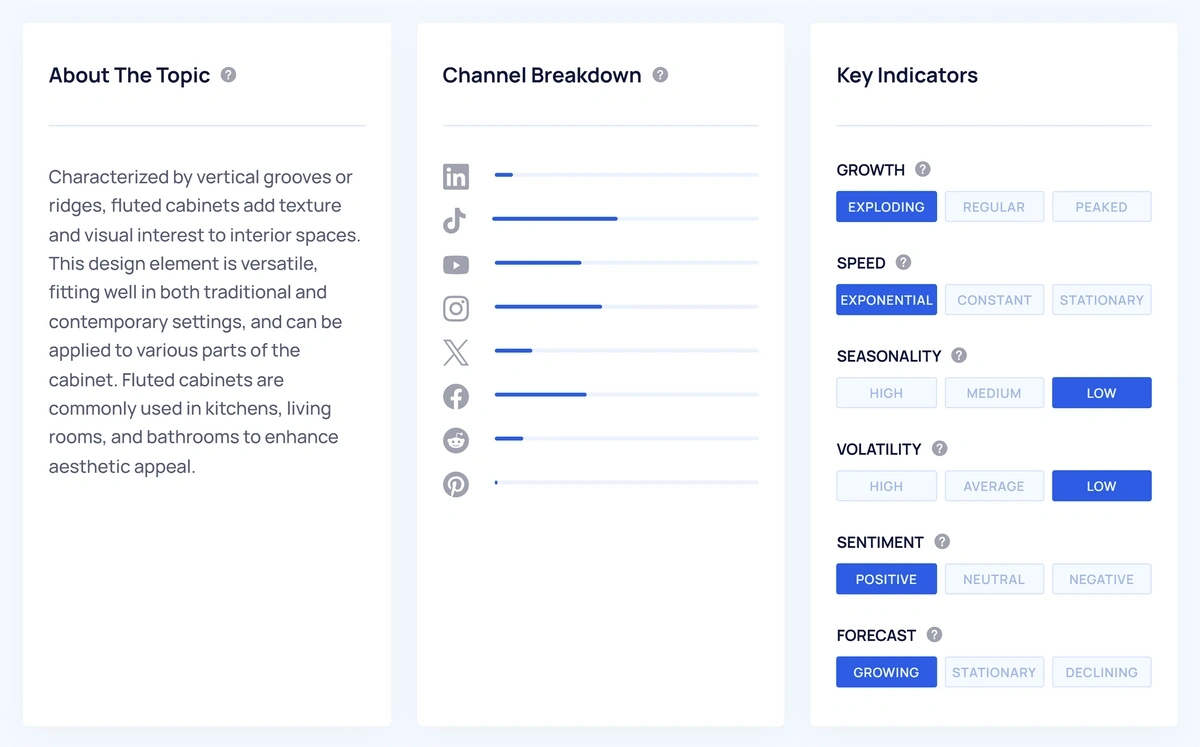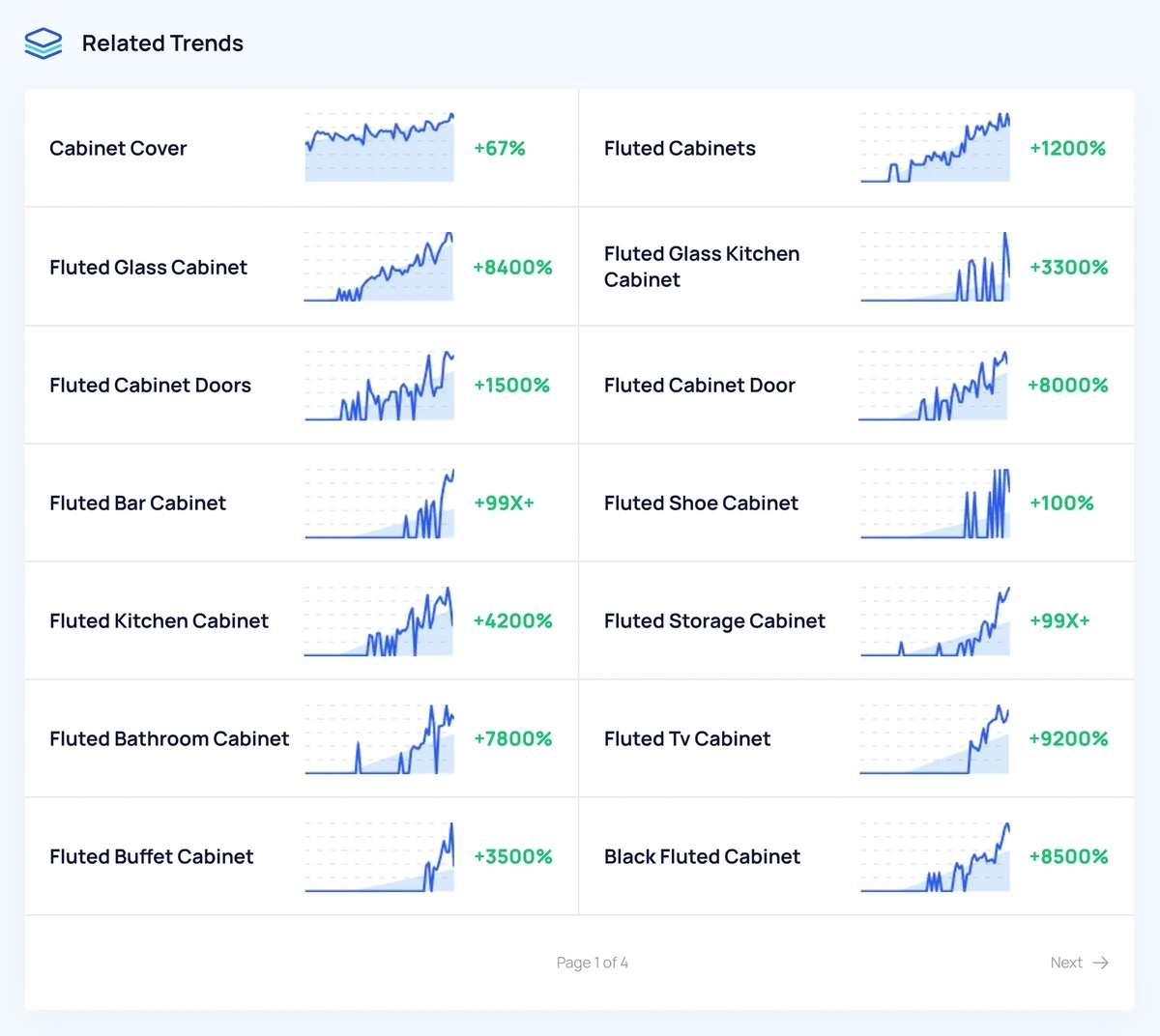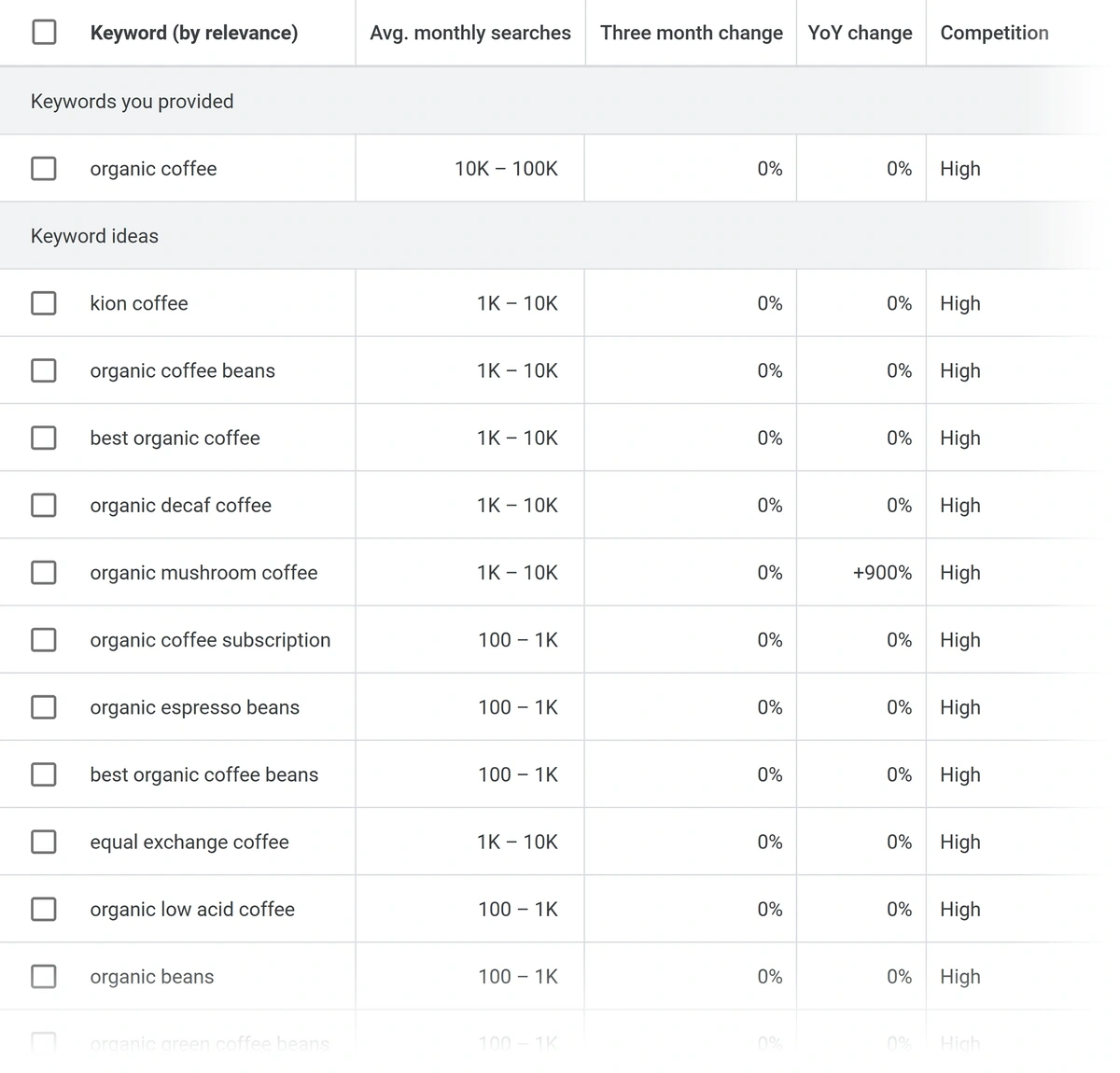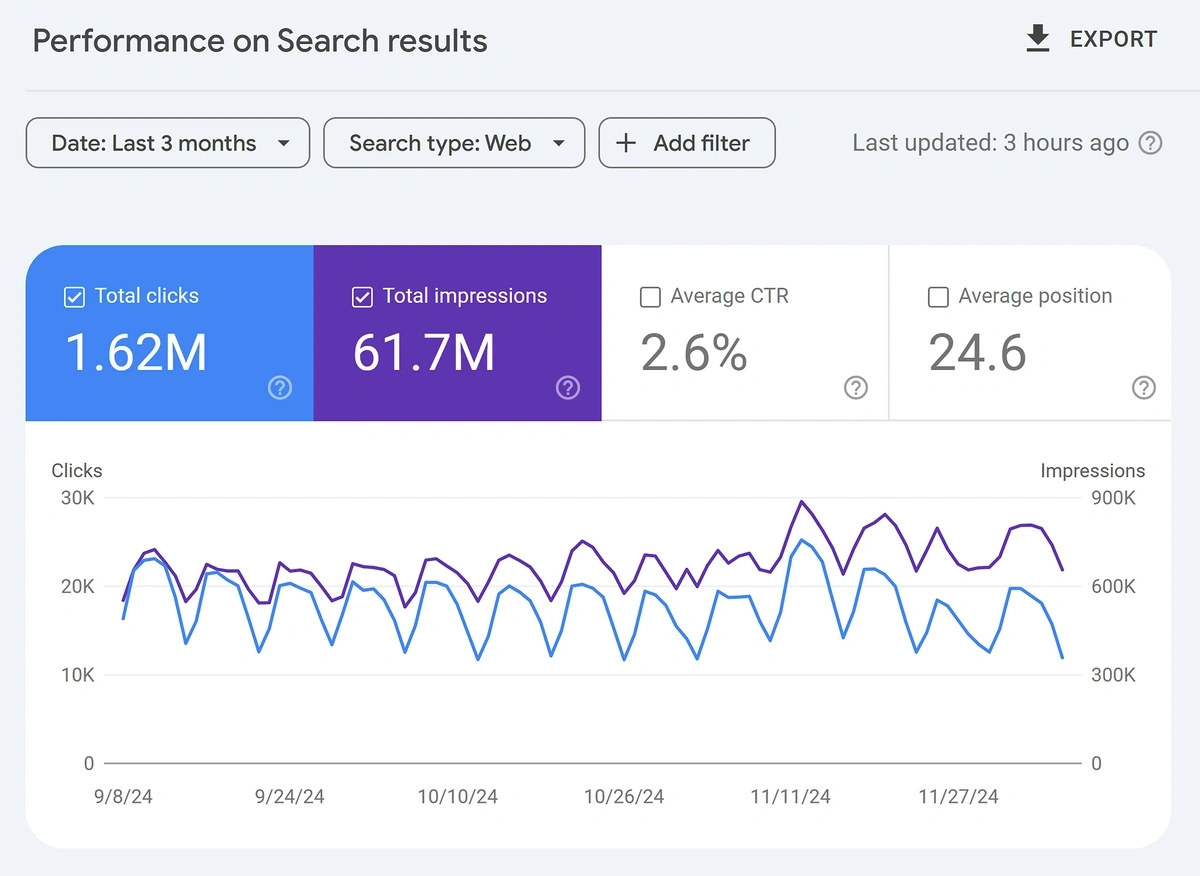
Keyword Research for SEO: Why It Matters & How to Do It
Effective keyword research for SEO is the foundation of your digital marketing strategy. Your task as a marketer is to:
- Identify relevant keywords your audience is using
- Build outstanding content around those keywords to rank higher on Google
Get this right, and you’ll attract an audience to your site who may go on to become paying customers.
The key is to avoid chasing keywords that drive the wrong kind of traffic.
In this article, my goal is to share tips for conducting keyword research for SEO success. By the end, you’ll have actionable steps for identifying keywords that can drive real results for your website.
What Is Keyword Research for SEO?
Analyzing keywords helps you bridge the gap between what your audience is searching for and what your business is offering.
For example, if you own a bakery, keyword research could uncover related terms like:
- “best cupcakes in london”
- “artisan bakers”
- “gluten-free bakery near me”
Creating content around these topics helps you to become a trusted source of advice, which draws in traffic and revenue.
Keyword research also helps you uncover deeper insights, specific problems, and pain points.
To take the example of our bakery business again, a quick search for “baking” in the Semrush Keyword Magic tool reveals a bunch of terms related to gluten-free baking.
Finding gluten-free products is clearly a pain point for your target audience, and it’s a problem you can solve for them.
This is a great way to build trust and, ultimately, get more sales.
With that, let’s explore the finer details of keyword research and how you can discover the ideal keyword opportunities for SEO success.
Get More Search Traffic
Use trending keywords to create content your audience craves.
How to Do Keyword Research for SEO
Keyword research is easiest to conduct with a tool, preferably one with a large keyword database like Semrush.
Here’s a basic keyword research guide to help you understand the most important concepts.
Find Keywords You Already Rank For
If your website already has some content, it may already rank for some keywords, even if you’ve never optimized your site for SEO.
Checking your current position is helpful so you can create a benchmark, or starting point.
Finding keywords you’re already ranking for is easy. The Semrush Organic Research tool is perfect for this.
The Overview section of this report shows you:
- The search terms your website ranks for
- Total organic traffic
- Traffic cost (related to paid advertising)
- Organic keywords trend chart with keyword position groups
You can immediately see changes in keyword rankings over time.
The Top Keywords table highlights the keywords bringing the largest share of traffic to your website.
And you can click View all keywords to see all the keywords you currently rank for.
Now it’s time to plan. To improve on your current rankings, I recommend that you focus on your best keywords first.
That means focusing on things you’re already ranking for in the top 10.
For large websites, you’ll want to use filters to make the keyword list manageable.
Set the Positions filter to Top 10.
This is a good baseline to start from, but don’t forget to keep an eye on these rankings as you start to do keyword research. Tracking positions should be one of your monthly SEO tasks.
Get New Keyword Ideas
New keyword ideas to keep your website growing by adding more informative topics for your audience.
There are a few ways to find new keyword ideas.
The Semrush Keyword Magic tool is my go-to when I’m planning a content strategy.
Let’s work with an example: “fishing poles”. If we type that in to the Keyword Magic Tool, Semrush instantly shows a list of keyword ideas.
From there, you can use the different filters and modifiers to find specific keyword ideas you can work with.
One simple way is to use the Questions toggle button. Question keywords are great for planning topics for your blog.
In this example, “how to restring a fishing pole” and “how to set up a fishing pole” can be used as target keywords of two separate articles.
And each is likely to drive a decent amount of traffic based on their search volume (the number of searches per month).
You can take your keyword research to the next level if you can discover trending topics that competitors haven’t covered yet.
Exploding Topics Pro is perfect for capitalizing on those topics.
Click Trend Analysis and enter the same topic. You’ll immediately see how the interest in that topic is changing.
Pay attention to the Related Trends section.
This is where you can uncover great topic ideas with serious growth potential.
The “how to store fishing poles” could be a good fit for a seasonal article. We can see interest trending up in the past couple of months.
Now we can go back to Semrush to expand the data.
Paste the question “how to store fishing poles” in the Semrush Overview Tool and we learn that:
- It has a low keyword difficulty (KD), so the chances of ranking are higher
- Keyword volume is also fairly low
- The SERP checker shows us that the keyword has featured snippet available
The low search volume here may be deceptive because Exploding Topics reports a recent increase in traffic. And if your site is small, low-volume keywords can be easier to rank for (but you should confirm this by checking keyword difficulty score).
In this case, the search results mainly consist of forum discussions, indicating it’s a low-competition keyword with room for an informative article.
Every website needs a balance of low-volume and high-volume keywords. I’ve seen low-volume keywords outperform much bigger keywords in terms of the revenue they generate.
So don’t let the volume deter you from choosing a good keyword idea.
Analyze Competitors’ Keywords
Competitors are a great source of keyword information. All you need is the right tool that shows you every keyword your competitors are ranking for.
This can lead to some great discoveries that you may otherwise have missed.
The Semrush Keyword Gap tool is ideal for getting a direct view into your competitor’s keyword performance.
Just enter your own domain and a few competing domains to start.
You can see which keywords your competitors are ranking for, but you aren’t (yet).
If competitors with similar Domain Authority are ranking for keywords that you’re missing, there’s a good chance you can also attain decent rankings for the same keywords.
Note: Domain Authority (DA) is a score that Semrush calculated by taking into a domain’s backlink profile, organic traffic and other factors.
Consider Search Volume
Search volume is an estimate of the searches on Google a keyword sees every month.
A high-volume keyword in one region might have too low a volume in your target region.
For instance, the keyword “diwali gifts” has a volume of 3.6K in the US. The same keyword has a volume of 49.5K in India.
If you’re targeting high-volume keywords, use this information to prioritize your keywords accordingly.
But even a low-volume keyword can generate sales and consistent traffic in the long term if it’s ranking on top.
Instead of focusing on volume, a better approach is to think about relevance.
Targeting keywords that are relevant to your website gives you more of a chance to rank well.
I use the Semrush personal keyword difficulty score (PKD) to check this.
It calculates my chances of ranking for a keyword based on my existing topical authority. It’s by far the most useful AI SEO tool that I use daily.
Evaluate Search Intent
Search intent refers to the reason why a user is searching for a particular keyword.
For example, someone searching for “margherita pizza recipe” has a different intent to someone searching for “takeaway calzone”, even though the terms are related.
There are different strategies for analyzing search intent.
Semrush categorizes every keyword in its database by search intent type. These are:
- Informational
- Navigational
- Transactional
- Commercial
In reality, search intent is a little more complex.
Sometimes a keyword can have different intents.
For example, the keyword “free keyword research” could mean the person is looking for an SEO research tool for keywords, or a comparison of multiple tools.
In my experience, the only true way to determine search intent is by doing a manual check of the first search result page.
In this particular example, I see the SERPs dominated by free online tools for conducting keyword research. Searchers are interested in a keyword research tool, not a comparison.
So if you want to target this keyword and satisfy search intent, you’ll need a tool of your own.
Tip: AI tools like ChatGPT and Claude are also pretty good at determining search intent, but it’s always best to double-check the suggestions with a manual check. Look at the SERP to validate what the LLM is telling you.
Check Keyword Difficulty
Most SEO tools give an estimate of competition level for each keyword. This is called keyword difficulty (KD).
The higher the KD score, the greater the effort required to rank for that keyword.
In Semrush and Ahrefs, KD is scored from 0 to 100, although each tool calculates it differently.
You’ll need to check your website’s domain authority to determine whether your site is strong enough to rank for a difficult keyword.
If your domain authority is much lower than competing sites, you’ll want to focus on less difficult keywords.
Review SERP Features
SERP features are special elements in search results that stand out from standard organic results. Prominent SERP features include:
- Featured snippets
- AI Overviews
- Image Packs
- People Also Ask
Occupying SERP features for a keyword is a huge advantage because these features take up more real estate on Google.
Naturally, a searcher is more likely to focus on these attention-grabbing SERP elements than organic lists and engage with your content that way.
Note: SERP features like AI Overviews and some kinds of featured snippets don’t necessarily lead to clicks. But they can still boost brand awareness.
Not every keyword has SERP features associated with it. Some keywords have no SERP features at all, while others might only have a few, or almost every one of what Google has to offer.
When possible, I recommend creating blog posts around keywords with SERP features. Your goal should be to occupy the more prominent types of SERP features (featured snippet, AI Overviews, image packs) to get maximum visibility.
Prioritize Keywords
As you work through this guide, you’ll start to build a list of keyword ideas.
You now need to apply some method of prioritization to target the right keywords in stages. Here’s what I’d recommend you look at:
- Search Volume: Target keywords with appropriate search volume, considering your existing domain authority
- Keyword Difficulty: Prioritize keywords with moderate to low KD unless your site is well-established
- Search Intent: Balance different types of intent, keeping in mind that transactional and commercial queries have a higher chance of conversion
- SERP Features: Target keywords that are likely to appear in relevant SERP features
- Buyer's Journey: Pick keywords aligning with different stages of the buyer's journey (awareness, consideration, decision)
- Business Potential: Focus on keywords that are most relevant to your business goals and have the highest potential for conversions
- Keyword Length: Long-tail queries tend to be more specific, and easier to rank for
In my experience, it’s best to target keywords with low difficulty that are directly relevant to your product or service.
As you build your domain authority, you can target more difficult keywords and try different types of content.
Best SEO Tools for Keyword Research
Now we’ve got the basics of keyword research down, I’ll give you a quick overview of my favorite keyword research tools.
1. Semrush
When it comes to any kind of content planning, Semrush is my ‘daily driver’. It has multiple tools that support keyword strategy, content planning, and SEO.
You can also read my in-depth Semrush review for more info about the best Semrush features as well as its weaknesses.
Keyword Overview
The Keyword Overview tool is the main part of the Semrush keyword research section. This will normally be your starting point in the keyword research process.
Type in a single keyword, or paste in a list of keywords for bulk analysis.
You can learn a lot from the data in this report, including:
- Keyword volume in your selected country
- Global volume with a breakdown by countries
- Keyword difficulty
- Intent
- Trend
- CPC
Looking at the volume and KD scores can help you decide if you should target the keyword now or add it to a plan for later.
Scrolling down to the end, you’ll find a handy table summarizing the SERPs. You can develop a good idea about the search intent of a keyword looking at this table.
For instance, all of these results are guides from well-known brands. This tells me that searchers want plenty of details and expert tips about YouTube SEO.
Reviewing the existing results will give you some ideas about the kind of content you’ll need to publish to match or beat these results.
To get additional ideas, take a look at the Keyword Variations and Questions.
Both of these lead to the Keyword Magic Tool, which we’ll look at next.
Keyword Magic Tool
You can access the Keyword Magic Tool in two ways:
- Click it in the Semrush sidebar
- Click the “View all keywords” button under the Keyword Variations section of the Keyword Overview Tool
In this example, high-volume keywords have high keyword difficulty, which means they’d be difficult to rank for.
But with the KD filter set to “Possible”, there’s one great idea: “youtube shorts seo”.
Here’s a cool Semrush trick.
Click on any keyword in the Keyword Magic Tool takes you to its Keyword Overview.
Keyword Overview allows you to drill down further by treating it as a new seed keyword.
For example, “seo for youtube shorts” has the same volume as the seed keyword “youtube shorts seo” but its difficulty level is lower.
This makes it a great candidate to become the focus keyword for your article on this topic.
Lastly, the Keyword Magic Tool is also great for seeing which SERP features a keyword is triggering on Google.
You can find this information under the SF column, which shows you the number of SERP features associated with a keyword.
Click on this number to expand a menu revealing SERP features showing up for the keyword by type.
Semrush tracks many different SERP features. Initially, I recommend focusing on featured snippets and AI overviews.
If you occupy these SERP features, you can enjoy a bigger share of traffic and search visibility than anyone else competing for the same keywords.
Organic Research
The Semrush Organic Research tool list is great for two things:
- Checking keywords you already rank for
- Seeing what’s working for your competitors
You can enter either a domain name for a site-wide keyword analysis or a specific URL for page-level analysis.
And you can use this report to quickly check your rankings.
It’s also great for seeing which SERP features you occupy, as well as the ones that are not linking to your site.
Try running the same analysis on your competitors to see how well they’re doing.
Tip: Is your search performance dropping after a Google update? It’s helpful to analyze your competitors with the Organic Research tool and check how they’re ranking. You might discover interesting content strategies that might be helping the competitor. Or you might even discover every website in your niche taking a hit. Either way, knowing the effects of a Google update on your competitors is good for informing your SEO and content strategy.
Keyword Gap
Keyword Gap is one of my go-to tools for discovering missing keywords.
You can compare keywords between your domain and up to 4 competitors to see keywords you’re not ranking for, but may be able to target.
The chart shows the overlap in keyword coverage between your site and the competing sites.
The table at the bottom shows you how each domain is ranking (or not ranking) for relevant keywords.
The filter presets at the top of the table are one of my favorite Semrush features.
For example, the “missing” filter toggles the view to display only the keywords that all your competitors rank for, but you don’t.
And if you combine that with other filters like KD, you can find some excellent ideas.
In this example, there are at least two relatively easy keywords that Backlinko is missing: “real estate seo” and “local seo for small business”
Position Tracking
It’s important to track keywords to support ongoing SEO maintenance and content planning.
The Semrush Position Tracking tool is one of the best I’ve used for monitoring performance. It can track keywords on Google, Bing, and Baidu. It also lets you set up tracking for desktop, mobile, or tablets.
First, type your domain name to create a campaign.
Choose the search engine that you want to focus on, and the device type that should be used for tracking.
You can enter keywords manually here, or import them from other tools.
For example, you can import keywords from the Organic Research tool in Semrush, or Google Search Console.
Once set up, you can get a detailed picture about your rankings with weekly updates.
This report also tracks SERP features you’re currently occupying. It’s a great way to know if you have AI overviews, featured snippets, and other SERP features linking to your domain.
SEO Writing Assistant
The next step after identifying keywords is to start creating content around those keywords.
This is where the Semrush SEO Writing Assistant helps.
With this tool, you’ll get meaningful suggestions for:
- SEO
- Tone of voice
- Readability
- Originality
For SEO, it takes your target keywords and then suggests other terms to include in your content based on similar content from your competitor’s.
These recommendations provide ideas for relevant terms to include in your content to create a well-optimized draft.
The SEO Writing Assistant shows you the recommended length of your text and assigns a readability score that updates as you write.
Overall, the SEO Writing Assistant is great for creating SEO briefs and also for meeting set targets for readability, tone, and keyword optimization.
As with any AI tool, I recommend using your own judgement to determine whether all the recommendations make sense.
The goal of using tools like this is not to get a perfect score. It’s to create the best possible content for your audience, using the tool as a source of inspiration.
2. Exploding Topics Pro
Exploding Topics Pro brings unique insights about trending topics that you can’t easily find elsewhere.
There are a few ways you can it to find interesting topics and keywords for SEO.
First is the Trends Database option. This is a comprehensive database of topic trends grouped by industry.
Just select a category, and Exploding Topics will show you trending topics with sensational growth rates.
You can drill down further by selecting a topic.
This will show you an interactive chart with volume tracked for every month over the selected period.
Exploding Topics forecasts future growth as well, so you’ll know if a topic is likely to continue growing or decline soon.
Scroll down and you’ll find additional insights, including:
- A summarized description of the topic
- A breakdown of topic interest by social channels
- Key indicators about the trend’s behavior
Exploding Topics is great for finding trends related to your main topic. It can help you to find emerging keywords before your competitors are aware of them.
Even if your main topic isn’t growing, you may find a niche idea that you can target instead.
First mover advantage is more important than ever with Google putting more emphasis on information gain. So if you want to rank higher, you’ll have a much better chance writing on topics early in their trend path and before search results become saturated.
3. Exploding Topics Keyword Research Tool
Exploding Topics also has a free keyword research tool.
I use it to expand keyword research and find topics or related keywords. It’s a great alternative to the bigger tools because it doesn’t require a login.
Just type in your keyword and hit enter.
The tool instantly shows you:
- Search volume for your seed keyword and all related keywords
- Keyword difficulty for each one
- Cost-per-click
- Number of results
- Search trend over time
Click on any keyword to expand the data.
I like to keep this tool open while writing or editing content. I can quickly find related terms and get ideas for new sections in an article I’m working on.
4. Google Keyword Planner
Google Keyword Planner is another free tool for SEO and keyword research.
It’s designed for advertisers. But the keyword suggestions it generates apply to organic search as well.
Similar to Semrush, you just have to enter a seed keyword into Keyword Planner, and it reveals keyword variations.
In addition, you’ll find data points like:
- Avg. monthly searches
- Three month change
- Year-on-year (YoY) change
- Competition
Google Keyword Planner has some limitations. For example, you can only use it for your own domain. So you can’t use it to discover keyword gaps with competitors or spy on their ranking keywords.
For best results, I recommend using the combined strengths of both Keyword Planner with Semrush to find niche ideas for your blog.
5. Google Search Console
Google Search Console (GSC) is another tool by Google that reports queries you’re getting traffic from.
For every query, it highlights 4 useful metrics drawn from your site metrics:
- Total impressions, which means the number of times your site was seen in search results
- Total clicks
- Click-through rate
- Average position
Underneath the chart, you get a table of your top queries that you can sort through using these same metrics I mentioned above.
Next to the Queries tab, there’s a Pages report. This shows your top pages. You can filter and sort this report using the same data points.
GSC data is pretty good for checking your overall trends by tracking impressions and clicks. And it’s the single source of truth for your click-through rate from Google organic search.
That said, GSC is not the ideal way to track your keywords when you have powerful alternatives like Semrush Position Tracking.
But it’s a useful tool that can help you to increase traffic by including relevant keywords on your page.
Boost Your SEO Performance Strategic Keyword Research Today
Effective keyword research plays a huge part in building a strong presence in your niche and attracting relevant traffic for higher conversions.
With tools like Semrush and Exploding Topics Pro, finding the best keywords for SEO success is a lot easier.
For more insights, check out our guide to search engine positioning and learn about improving existing rankings.
Stop Guessing, Start Growing 🚀
Use real-time topic data to create content that resonates and brings results.
Exploding Topics is owned by Semrush. Our mission is to provide accurate data and expert insights on emerging trends. Unless otherwise noted, this page’s content was written by either an employee or a paid contractor of Semrush Inc.
Share
Newsletter Signup
By clicking “Subscribe” you agree to Semrush Privacy Policy and consent to Semrush using your contact data for newsletter purposes
Written By


Claire Broadley is the Lead Editor and AI Content Strategist at Exploding Topics, where she oversees editorial workflows, AI SEO s... Read more



